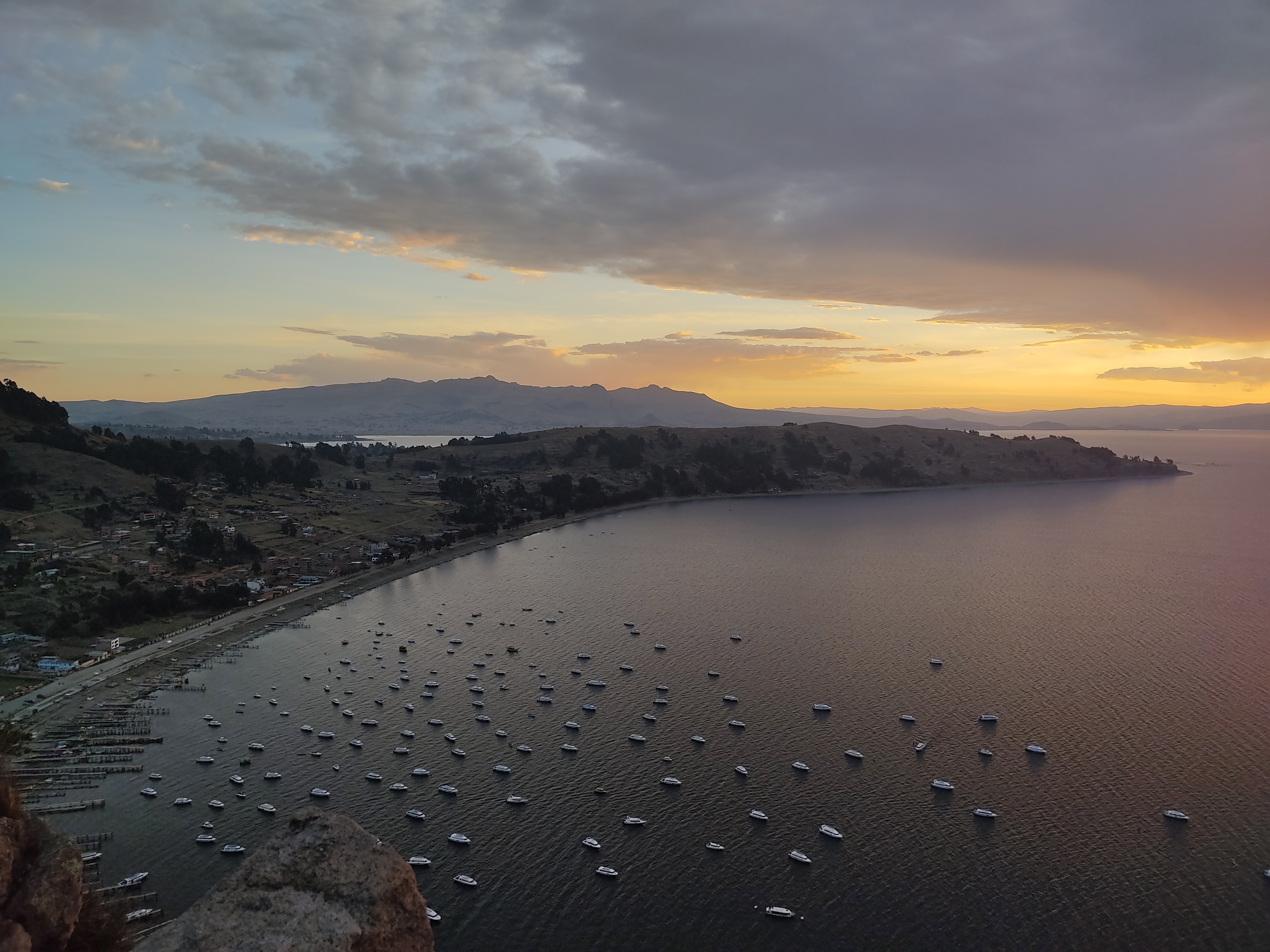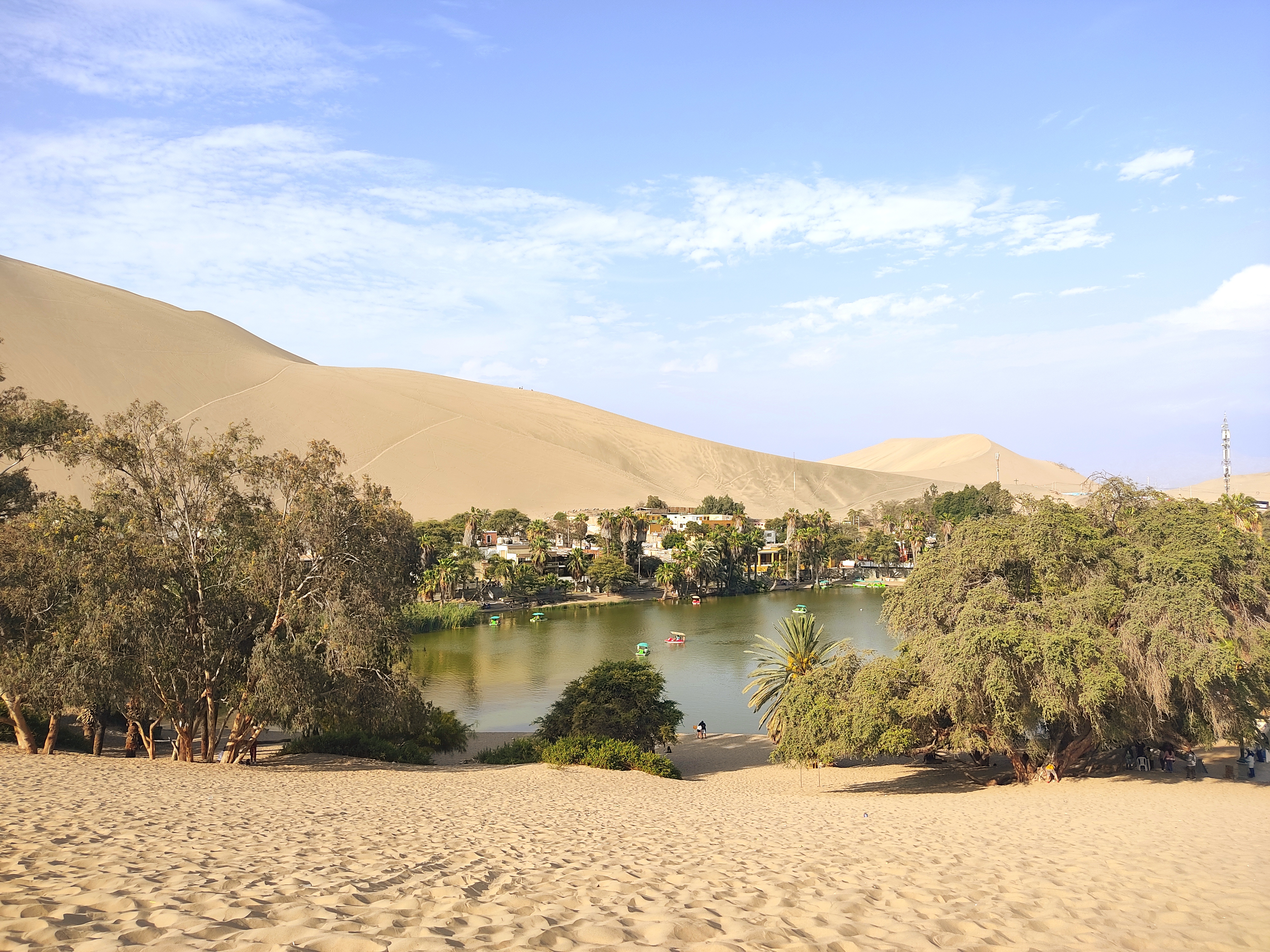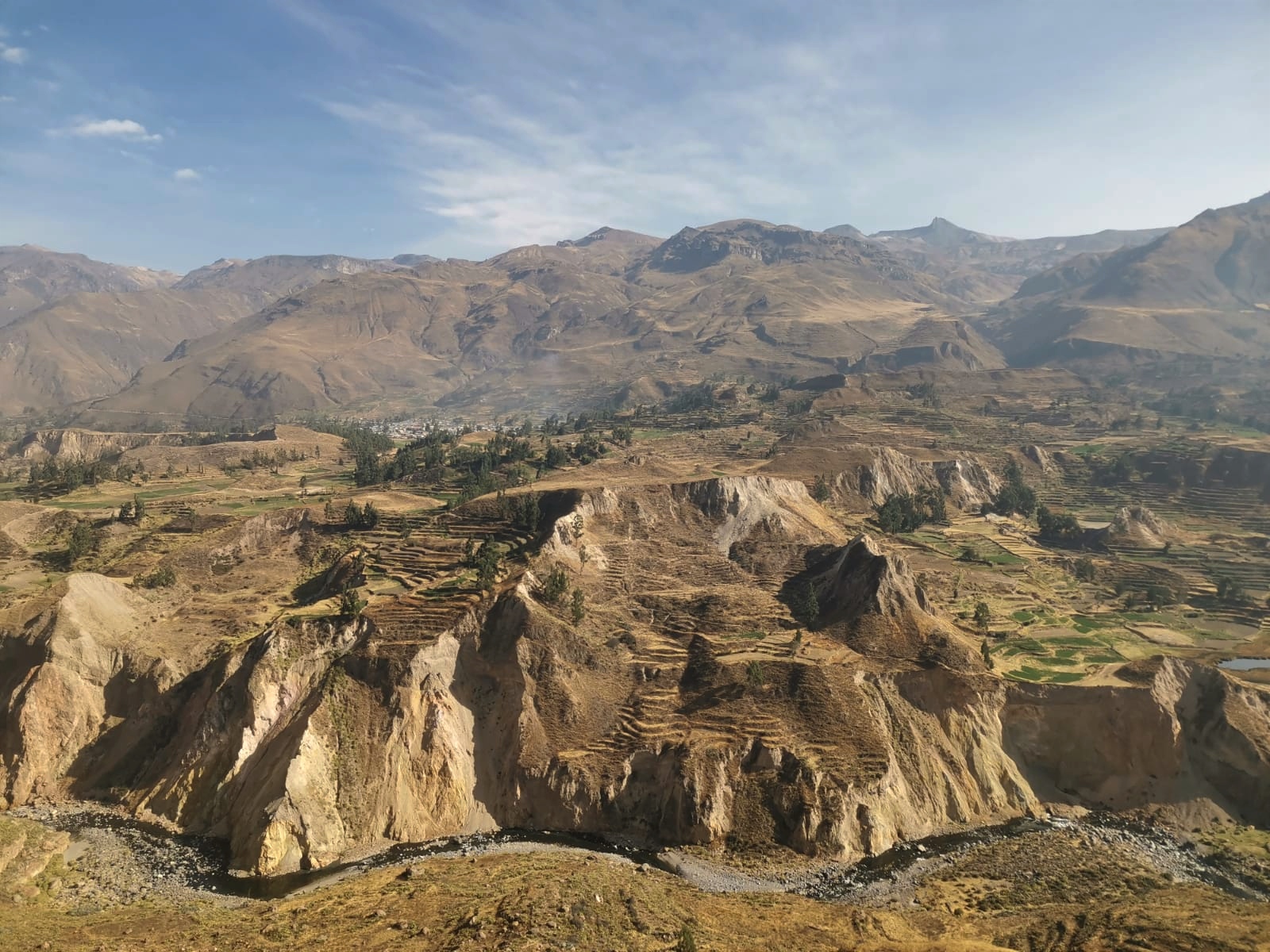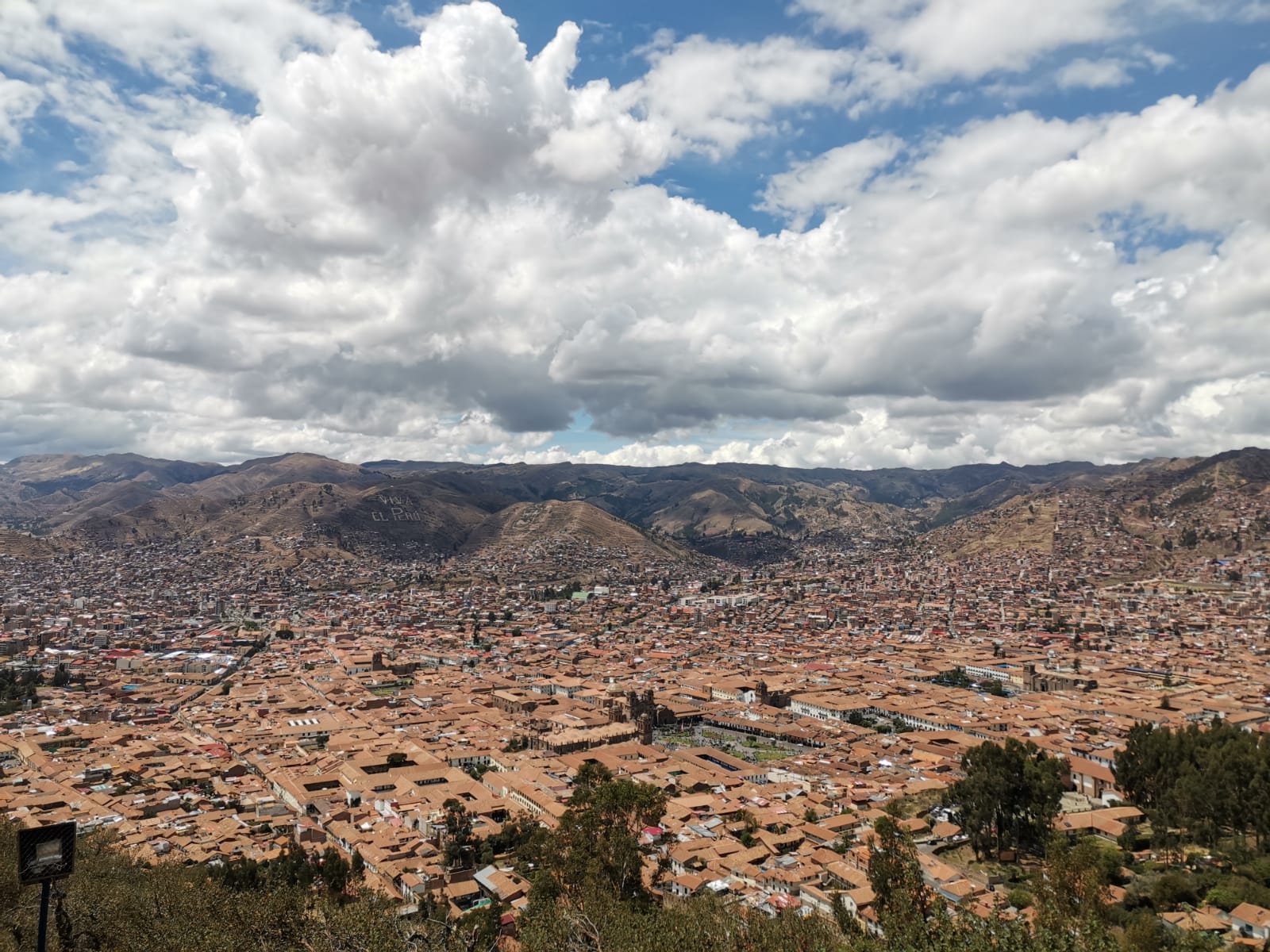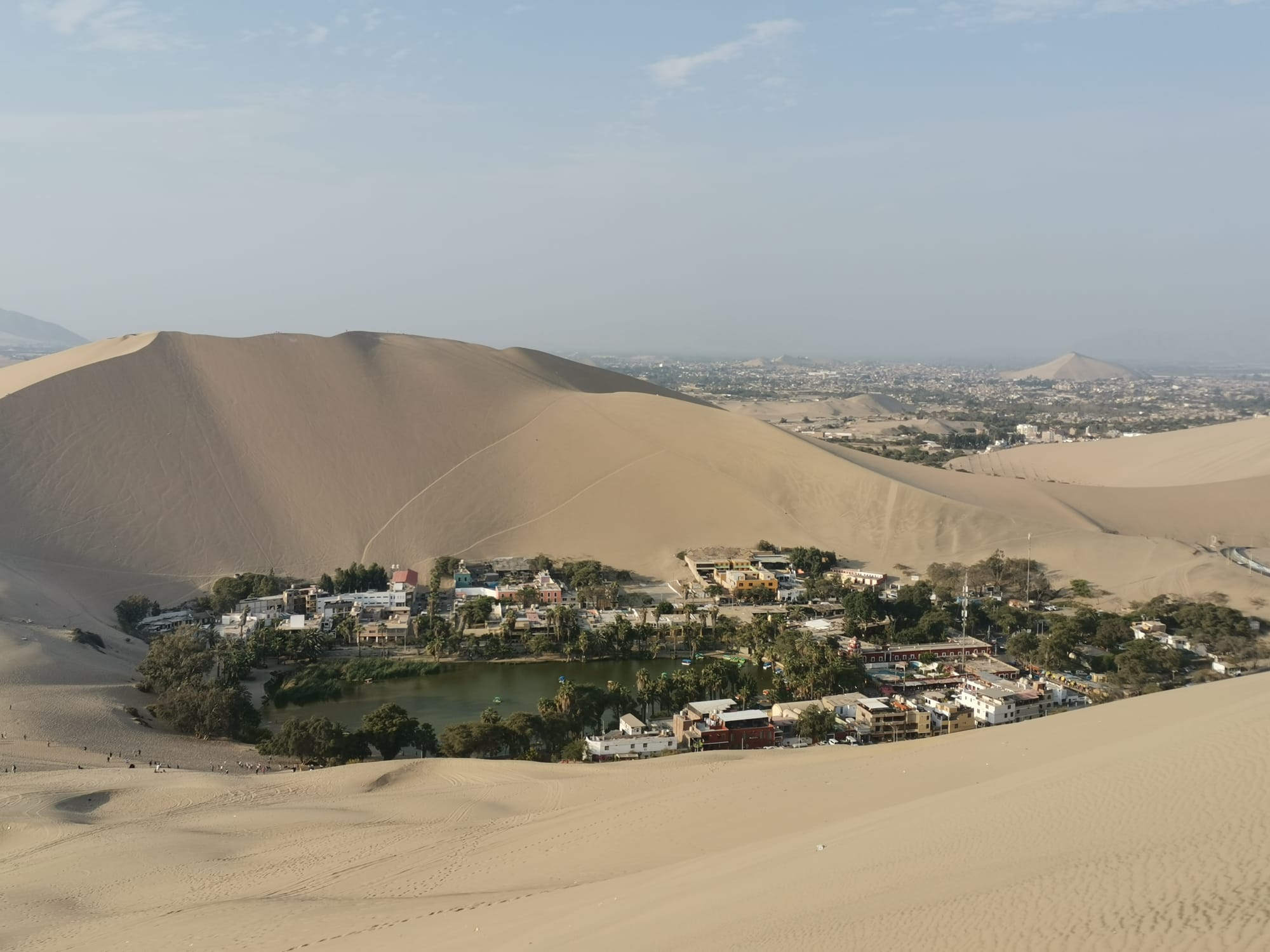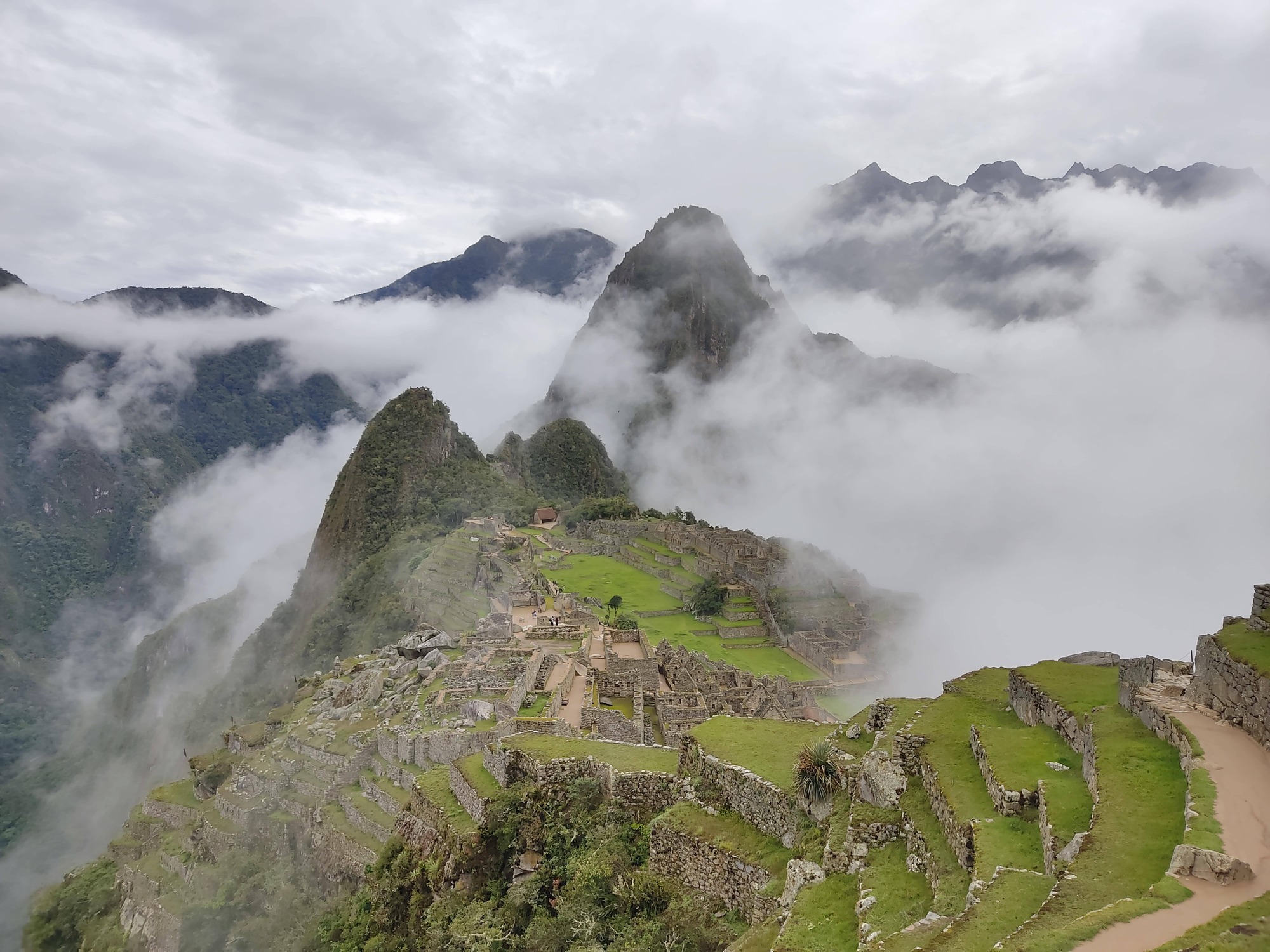Introduction
Our trip to South America was very spontaneous and improvised. We rarely planned ahead more than a few days (or occasionally weeks, as was necessary in Patagonia)! The Inca trail was the one exception to this. The hike is so popular, and with a limit of 500 peopleOf these 500, about 300 are porters (see below), so only around 200 tourists are allowed on the trail each day. allowed on the trail each day to protect this phenomenal site, permits sell out months in advance. While the Inca trail was technically way out of our budget, hiking the same route that the Incas used to reach Machu Picchu had always been on our bucketlists, and so we made an exception. Therefore, we booked our trek to Machu Piccu several months before we even set foot in Peru. We hoped that thinking about the price we paid wouldn't tarnish the experience, but in the end it exceeded all our expectations and we have to say you do get what you pay for. For the 4 days, we were treated like royalty, with some incredible food, lovely people, unbeatable views and overall an unforgettable experience.
Choosing a Tour for the Inca Trail.
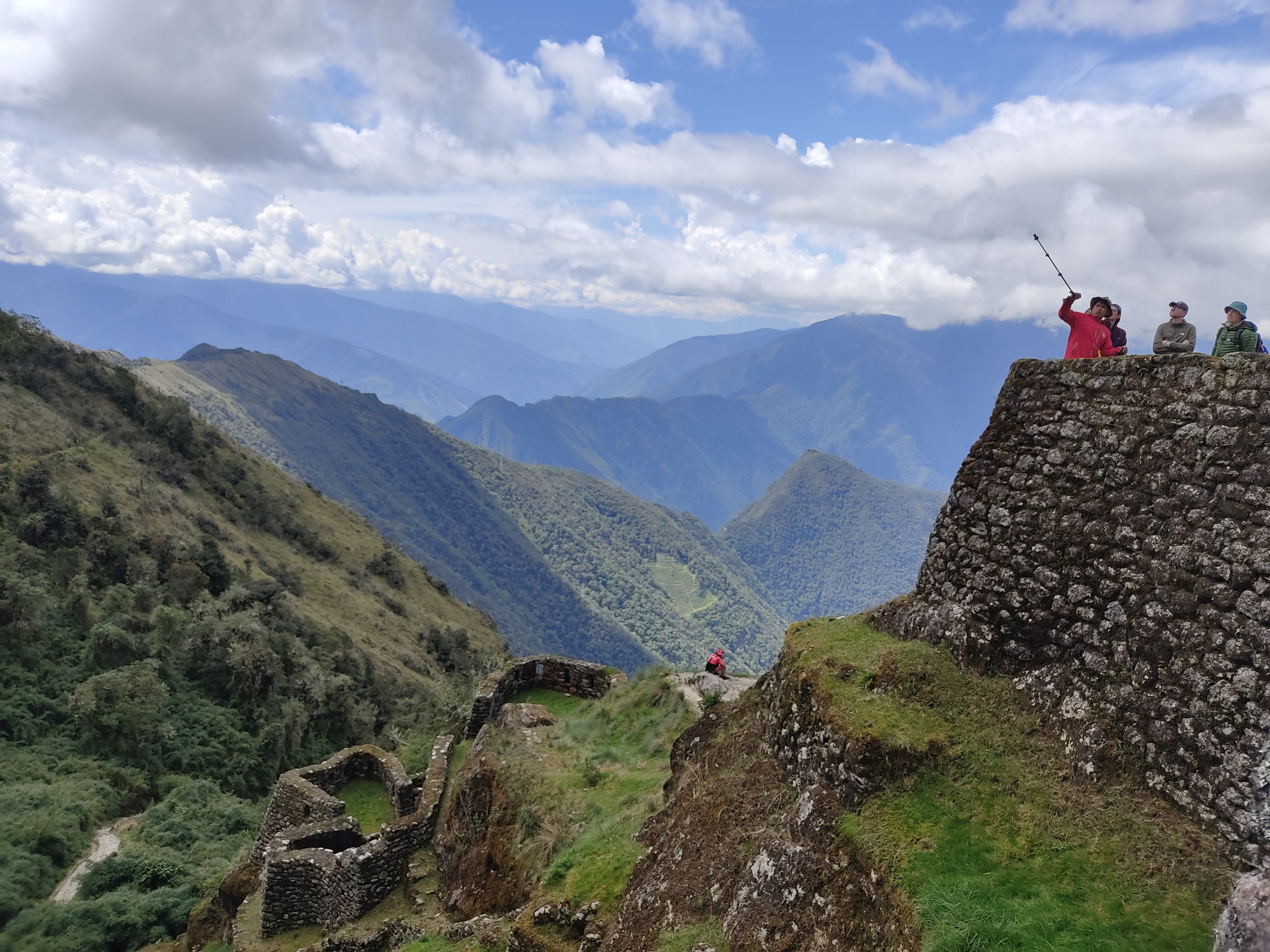
Due to governmental regulations, the Inca trail can only be hiked as part of an official guided tour - there is no way to do this hike independently. Because of the high demand for permits, and the logistical challenges associated with the Inca trail, all of these tours will be very expensive. However, some options will still be cheaper than others, depending on the amount of add-ons and luxuries you would like along the trail. The bare minimum you will need is:
- Transportation to/from Cusco
- Meals while you are on the trail
- Drinking water
- Camping equipment
A lot of tours will offer various different packages, such as visiting the hot springs in Aguas Caliente, riding the panoramic train back to Cusco, or even portable toilet tents, but these will come at a higher price. As well as these add-ons, different companies will charge different prices for the same toursWe are not sure why this is, because they all appeared to be offering the exact same experience. The guides and porters are all free-lance, so no company has better/worse guides than another, despite whag they claim.. Therefore, it is important to carefully check what is included to avoid paying more and getting less in return.
Because the Inca trail was going to be over our budget, we decided to limit the damage it would do and opt for the cheapest, bare-minimumWe did a lot of research to find smaller (and therefore cheaper), lesser-known companies. While this helped us save a lot of money, it did mean we had a much smaller group (which could be both a positive or a nevative) and didn't have many people to share the experience with. The most popular (and slightly more expensive) company, Alpaca expeditions, had 4-buses full of people going to the trail, whereas our company only had 2 other tourists joining us. tour we could find, which was with IncaTrailBackpacker. Although most companies include porters to carry your sleeping bag, mattress, and up to 7kg of personal luggage, IncaTrailBackpacker offered the option to save some money by forfeiting this, with the porters only carrying food and the tents.
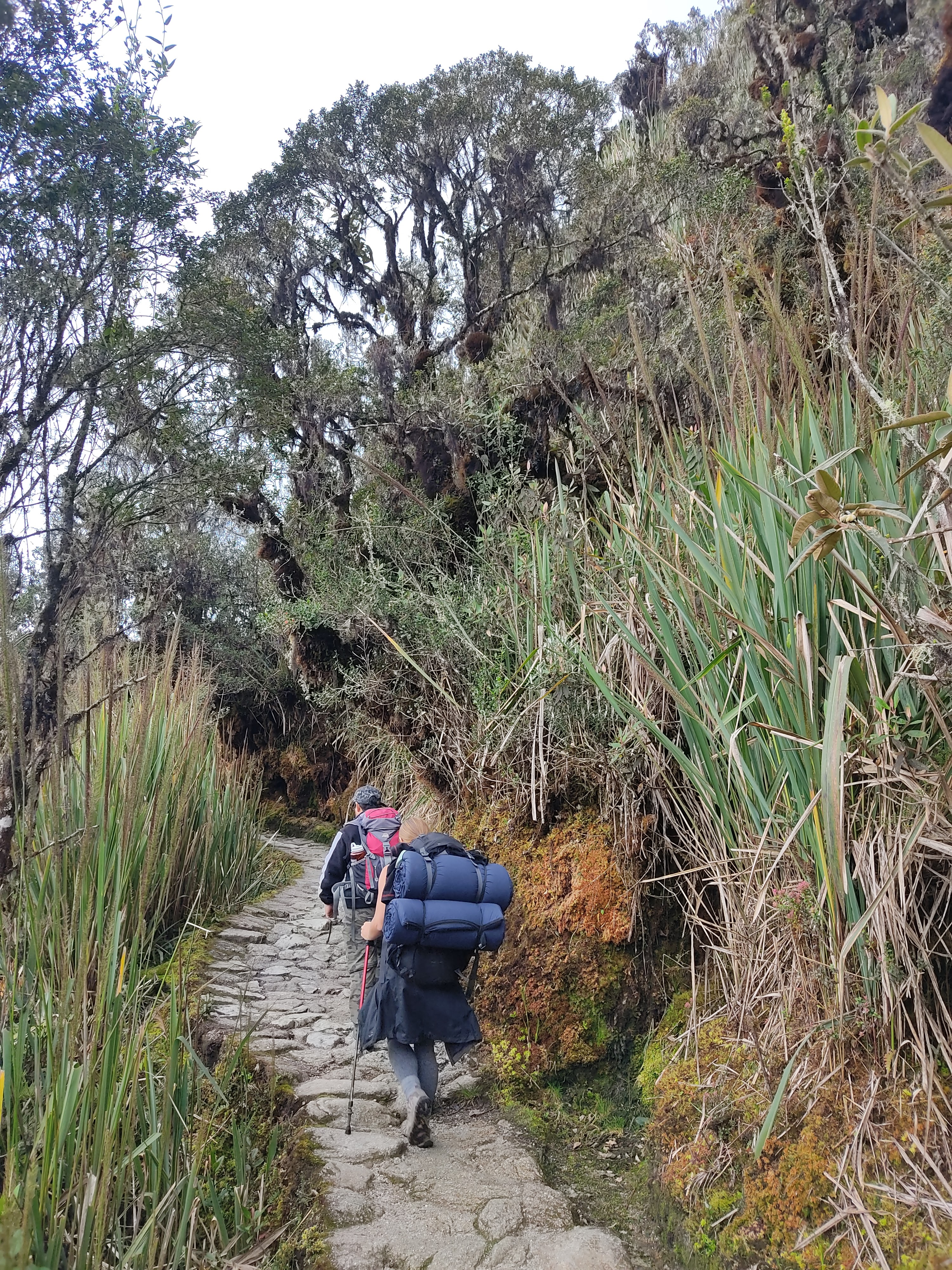
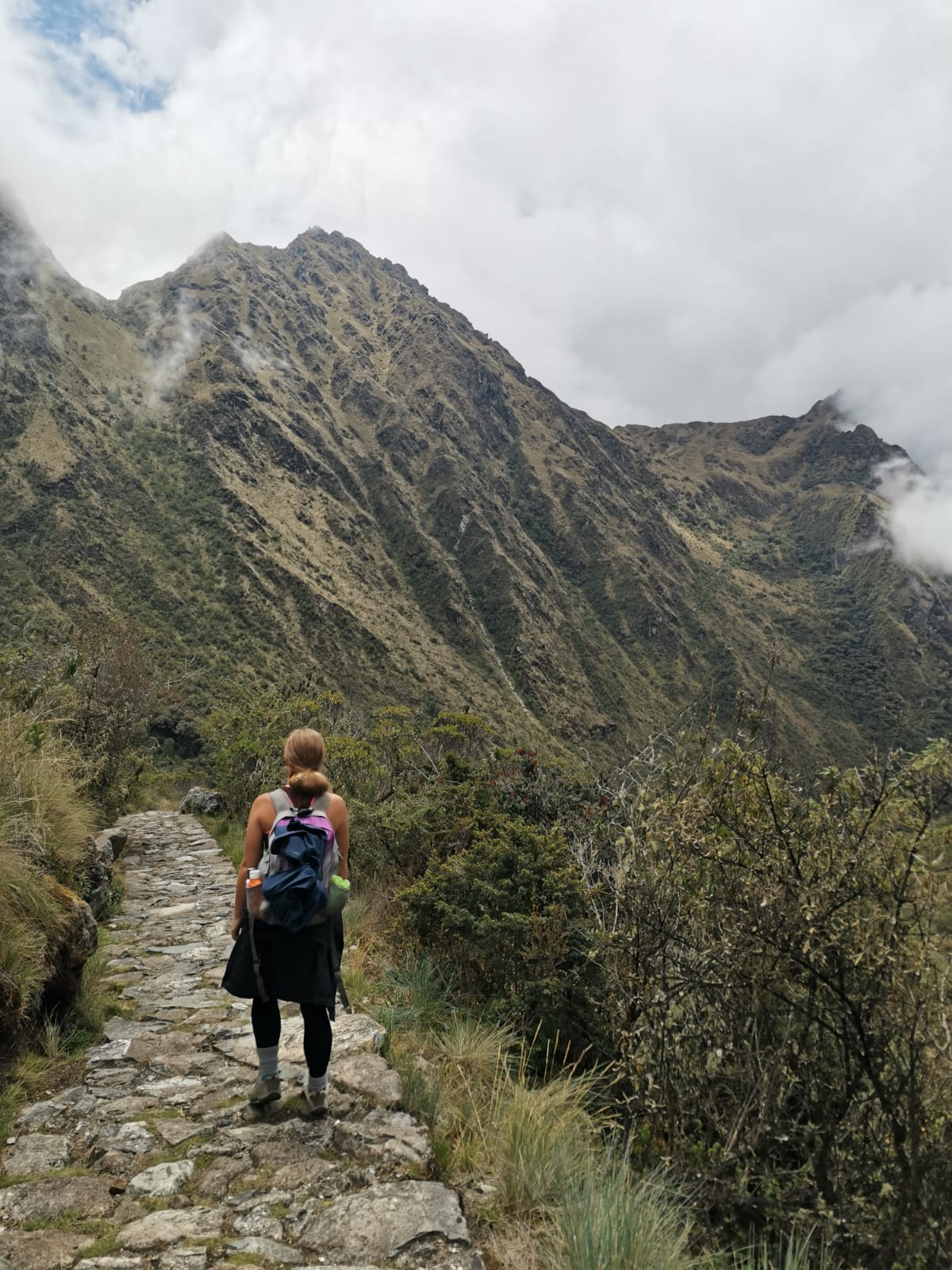
Not hiring a porter seemed like a great idea at the time of booking, but we didn't actually know how to prepare or how much weight we should pack. Apart from the Colca Canyon, we had never done a multi-day trek before. Add in the fact that we had made things harder for ourselves by visiting at the start of the rainy season, and we had to carry a lot of baggageWe didn't know how bulky our sleeping bags and mattresses would be, since we were only given them last minute at the start of the trail. Even though we left a lot of space empty in our bags, it was a big struggle to fit the thick mattresses in and we nearly had to leave one. Although we managed to pack pretty lightly, we were the only people we saw on the trail who didn't hire a porter to carry at least some of their stuff., and we felt slightly out of our depths. Our guide wasn't very reassuring either, telling us that the trail was 4.5/5 in terms of technical ability. Fortunately, we found the trail quite manageable, with the incredible scenery distracting us from the steep gradients, and it was definitely worth saving the extra money and carrying slightly more.
The Hiking.
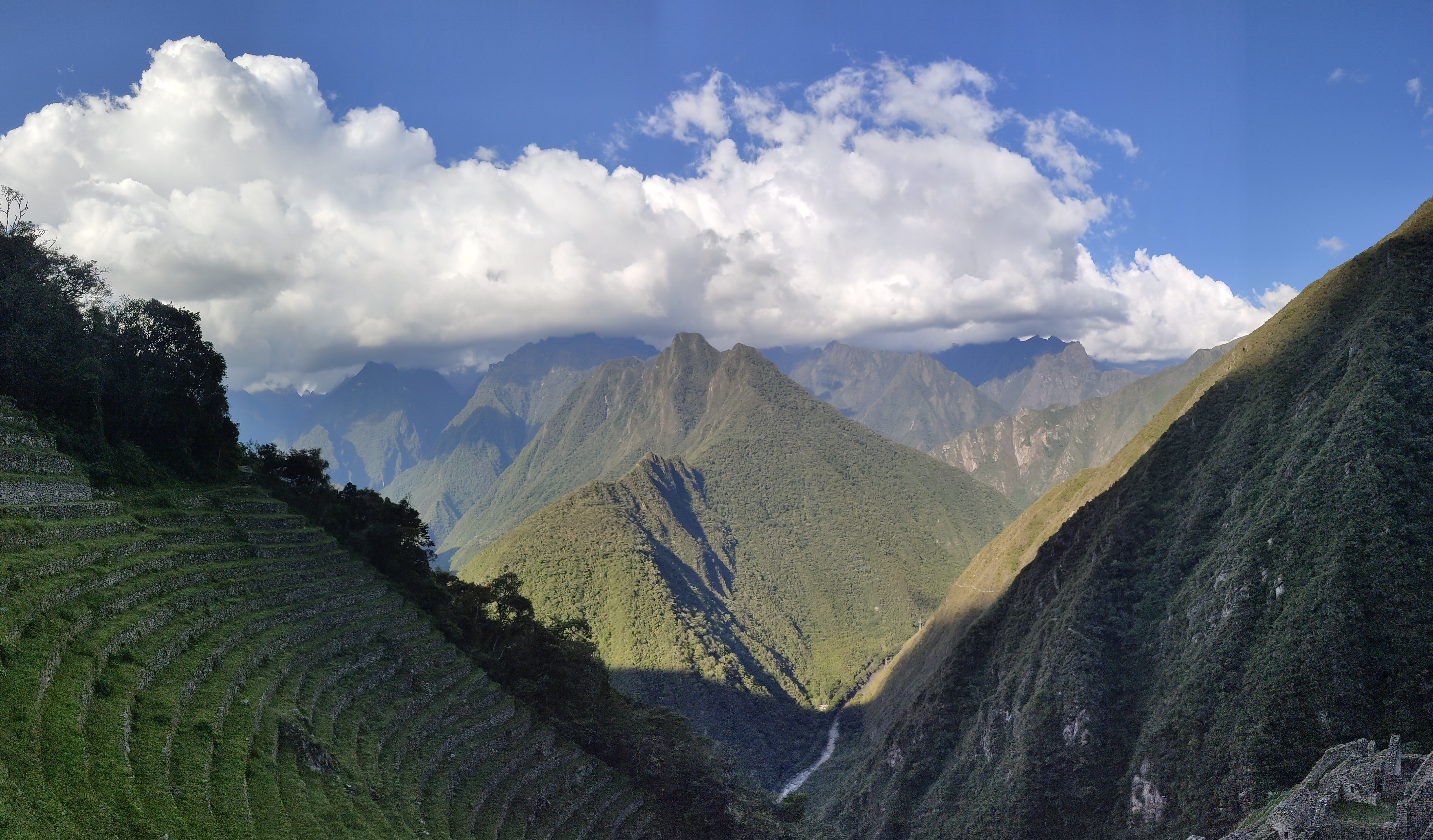
The four days of our trek consisted of:
- Day 1 - the warm up day, only 12km of hiking, mostly flat.
- Day 2 - the hard day, all uphill, climbing the highest peak. 10km of walking.
- Day 3 - the recovery day, 18km of walking, up the second peak and followed by all downhill.
- Day 4 - Machu Picchu, only a measly 5km to hike, but an early start.
The distances walked per day will differ, based on which campsites each tour agency uses. It is common to walk further than we did on day 2, followed by a much shorter 3rd day.
The route crosses through an unbelievable range of different ecosystems, which our guideOur guide also told us about the deadly animals that can be found along the trail, which wasn't exactly what we wanted to hear. explained to us, from chilly high mountains to dense, sweaty rainforests, and every day treated us to a different view. Initially, the terrain was rocky and dry, and we passed by small villages populated with a few locals rearing livestock (and selling snacks, water and use of their toilets for a small charge to tourists). We meandered alongside the Urubamba river, which carves a valley through the mountains to Machu Picchu and beyond, and slowly ascended until the river was way down below.
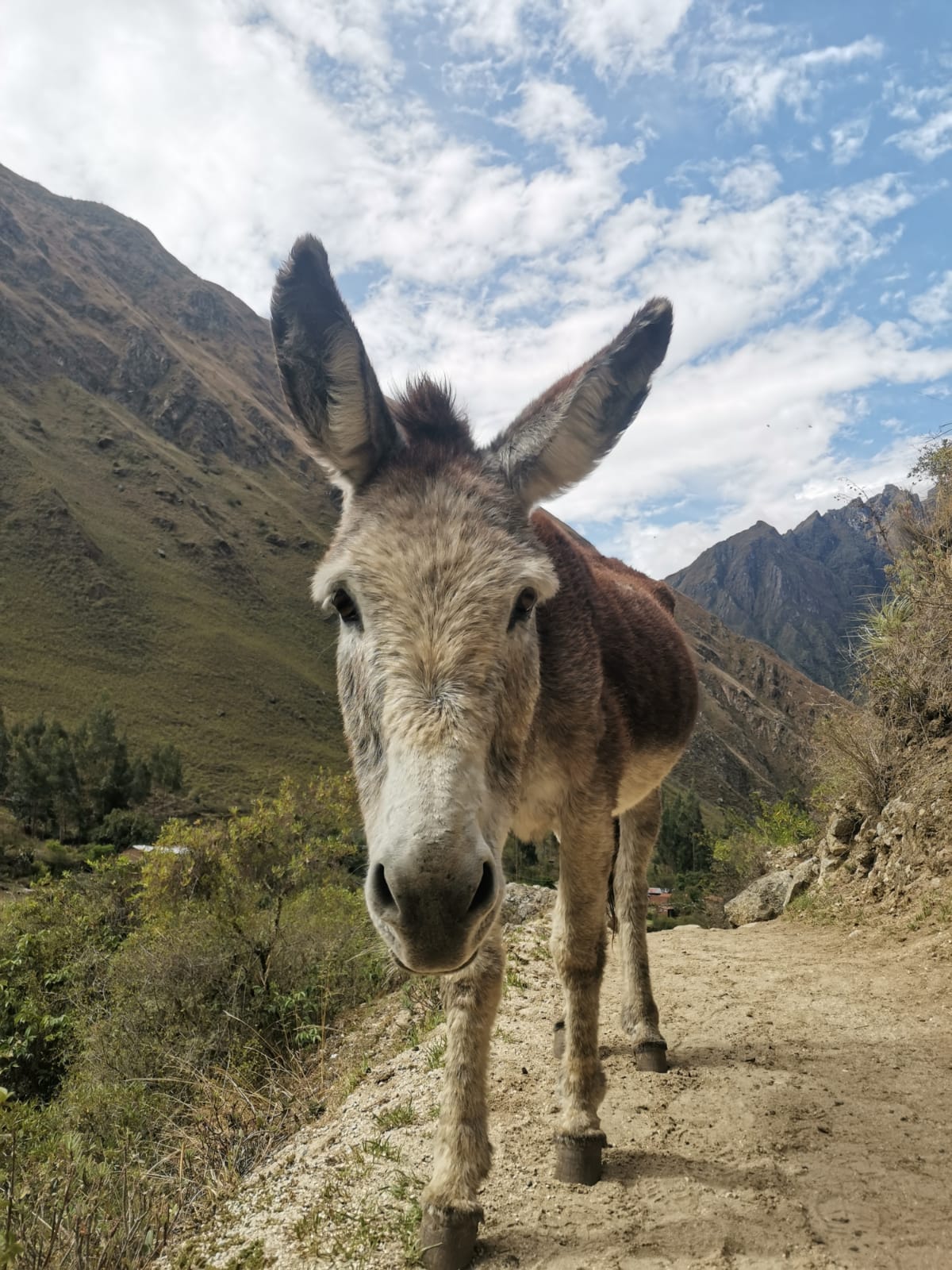
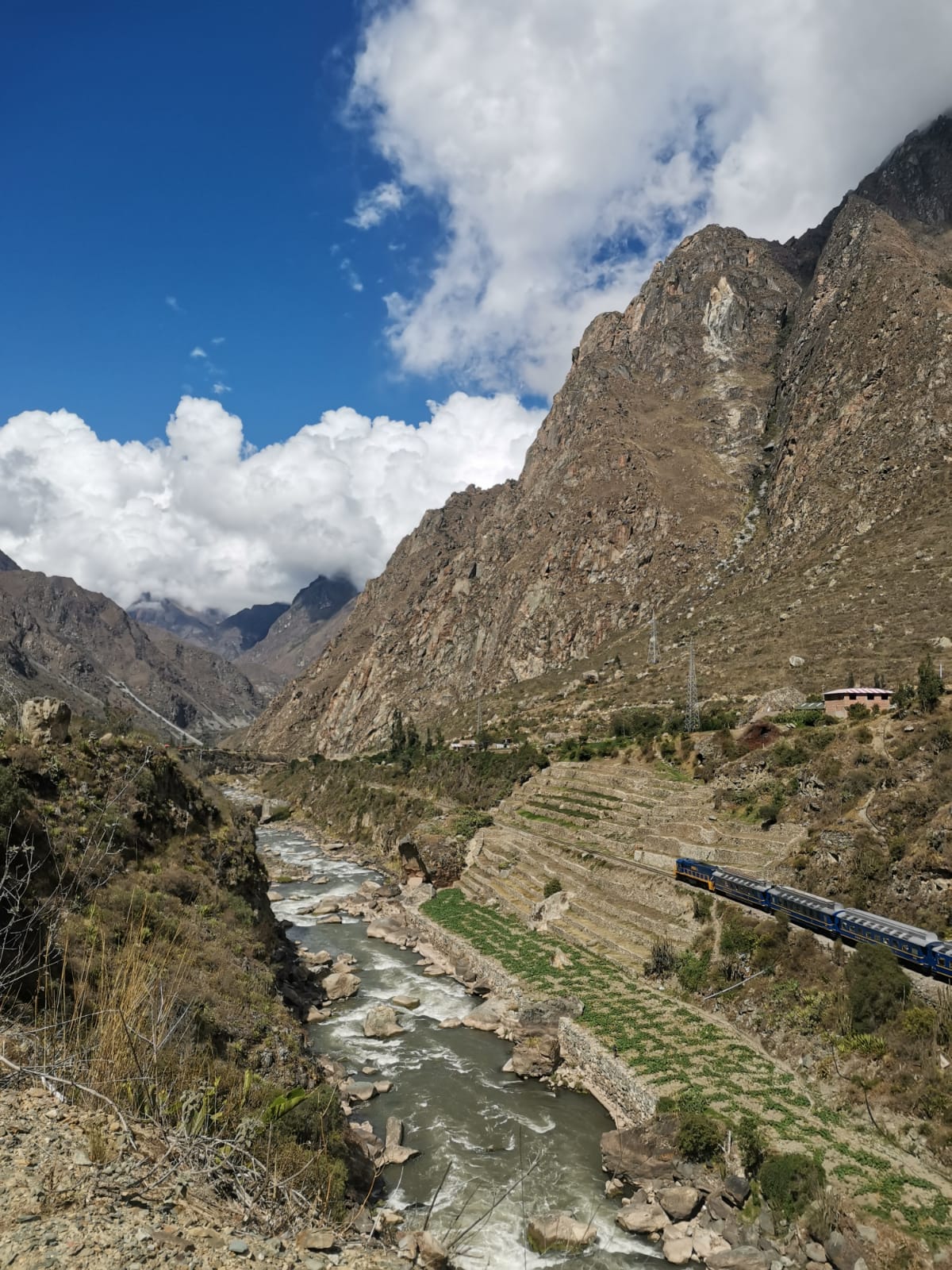
As the hike progresed, we climbed out of the valley and over the mountains, as the scenery gradually changed first to a green blanket of trees and shrubs, and finally to a cloudy rainforest. Climbing the peaks provided expansive views of the lush green landscapes, which was a more than adequate reward for enduring the long and tiring ascents. At the highest point, patience is required as the trail is often covered with a blanket of clouds, but the strong winds will eventually blow them away like curtains, revealing the scenery that surrounds the peak.
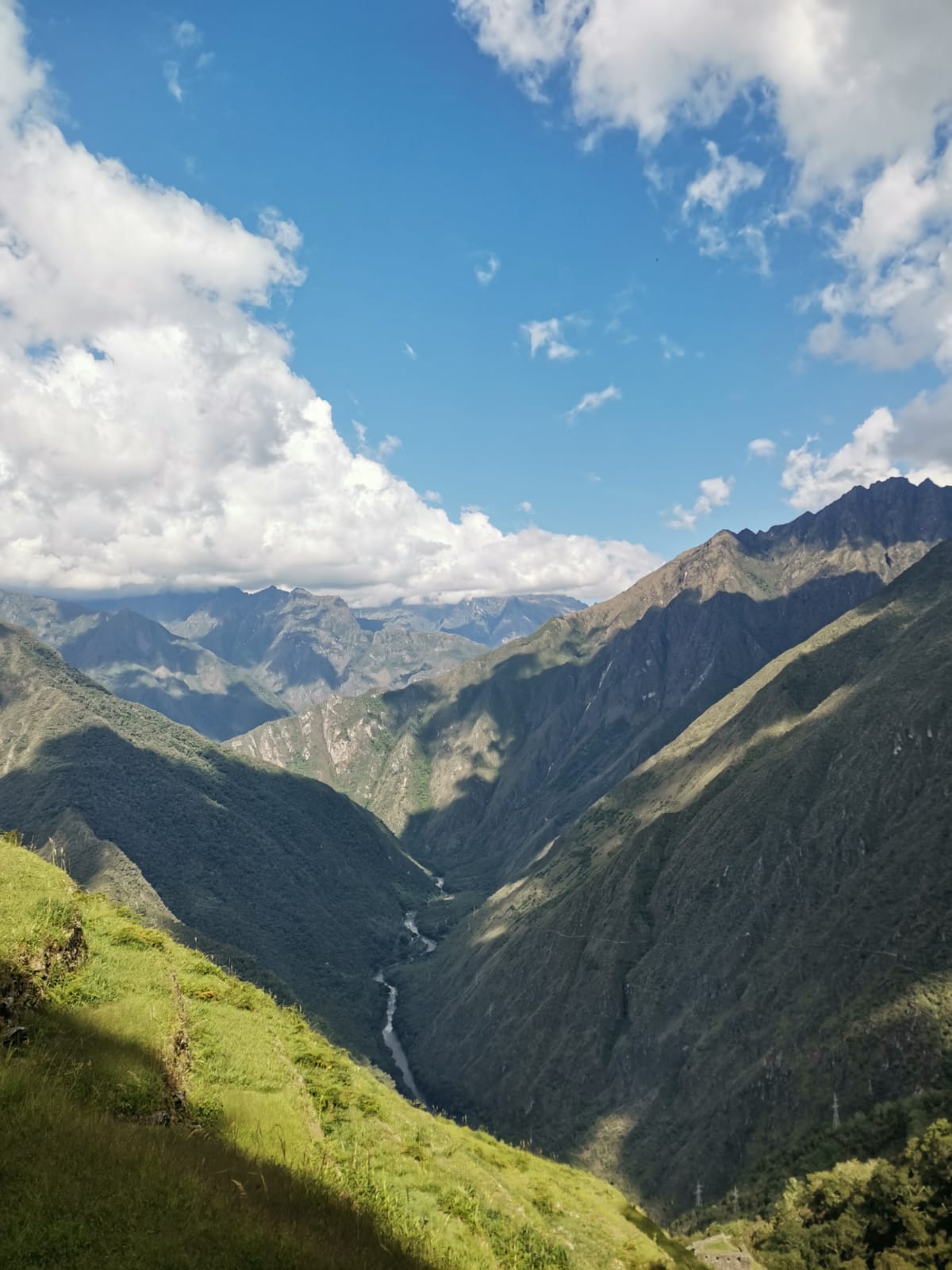
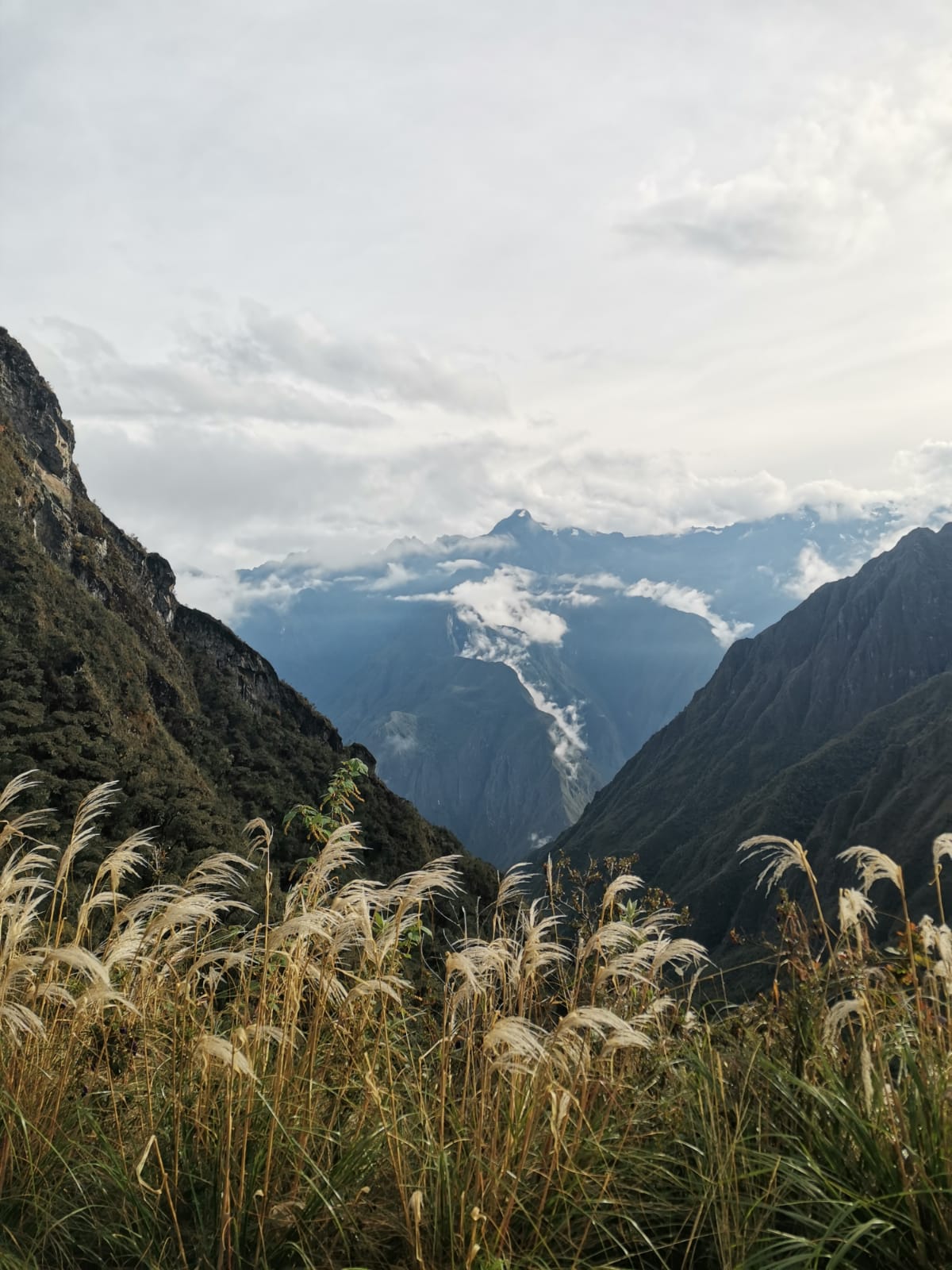
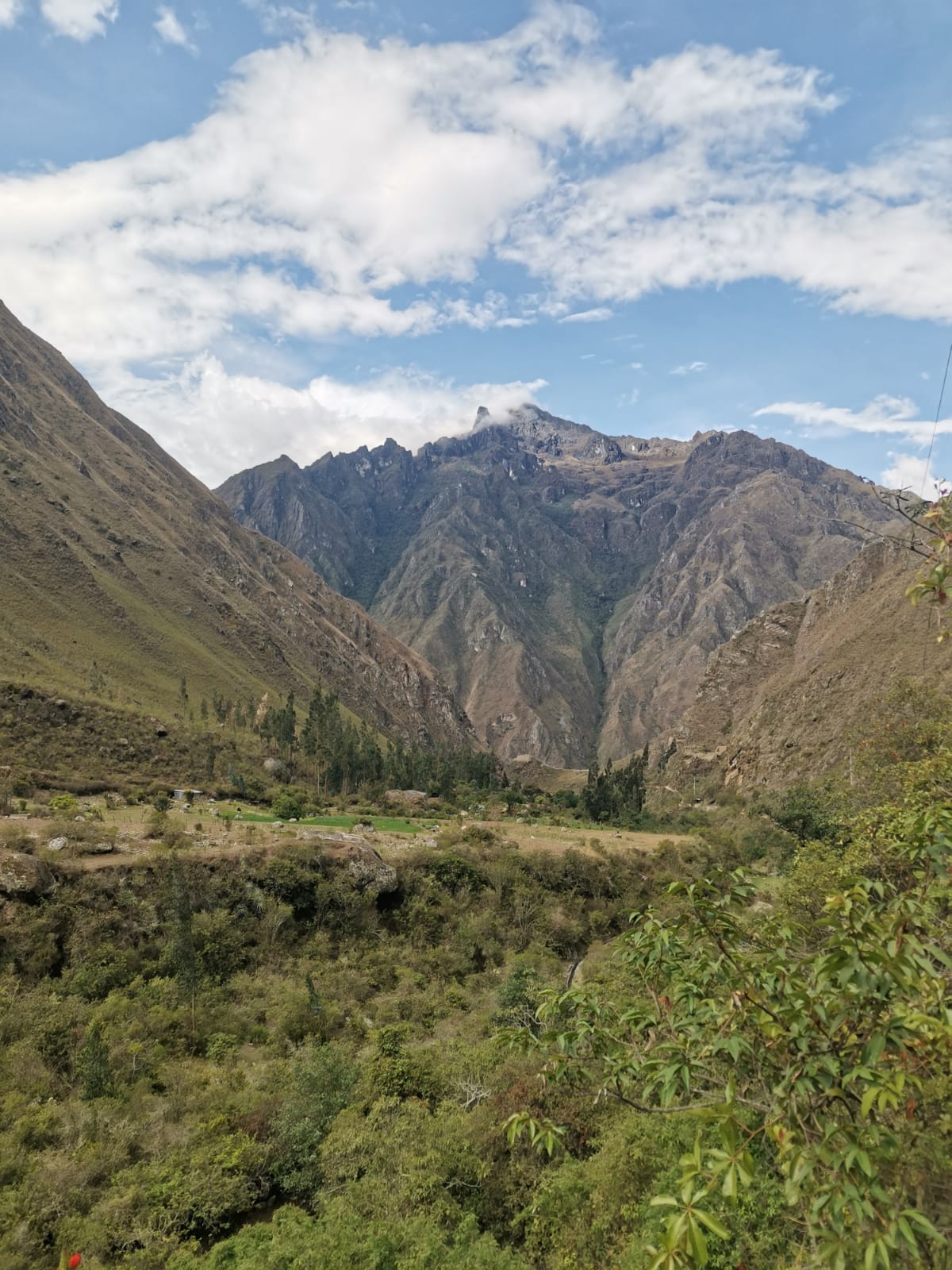
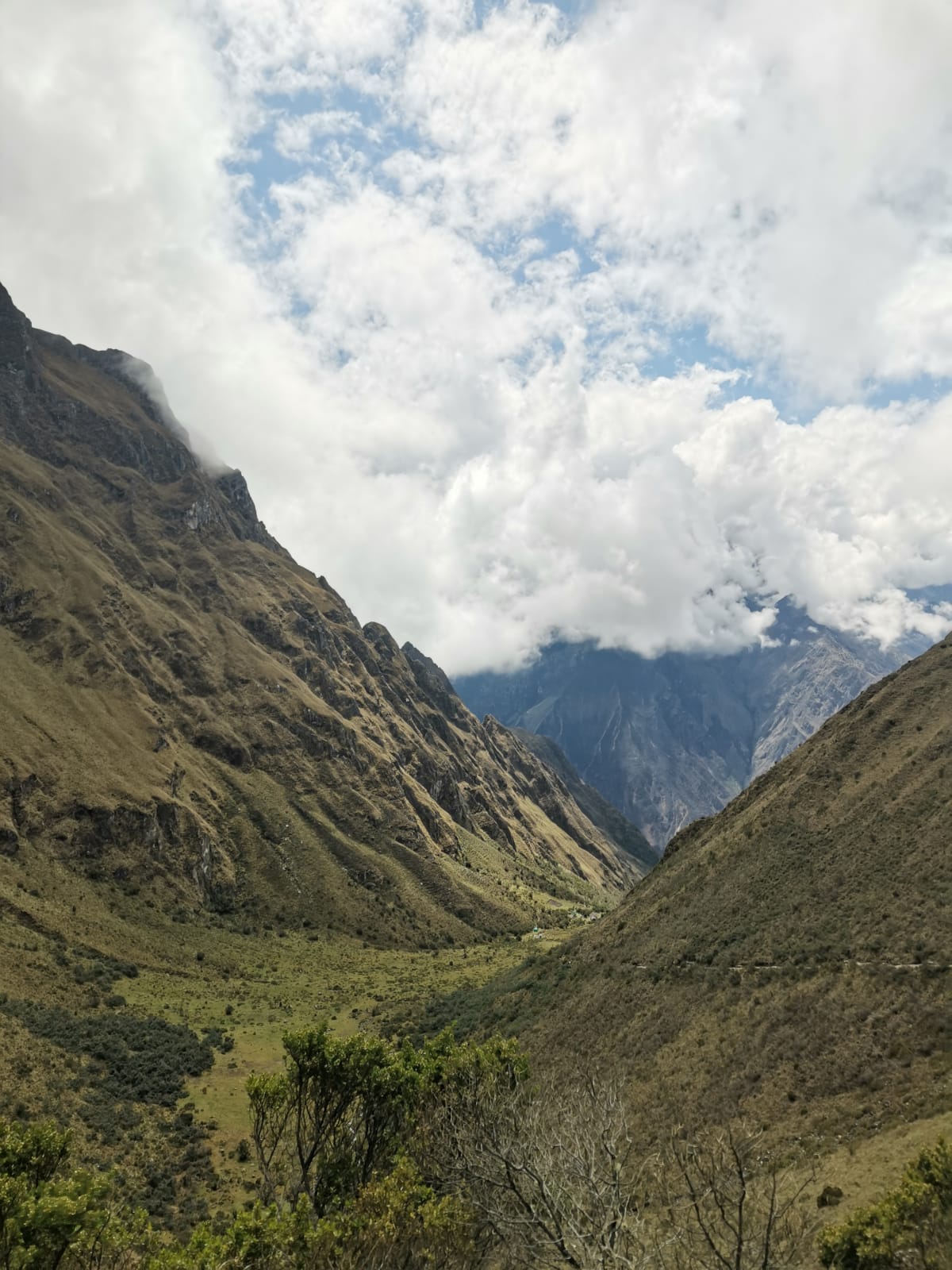
The Inca trail treated us to incredibly tranquil campsites. There is no Wifi or phone signal along the way, and the campsites were some of the most remote places we have ever been. After a day of walking, it was so nice to sit back, switch off, and get lost in the views. Using the streams and riversAlthough the campsites were nice, the showers use water taken directly from the rivers high up in the mountains. This means the showers are extremely cold, especially in the evenings! as the only source of running water, and being surrounded by mountains and forests truly felt like we had been transported hundreds of years back to the Incan times. The tiring days and peaceful campsites were a recipe for the best nights sleep we had had in a long time!
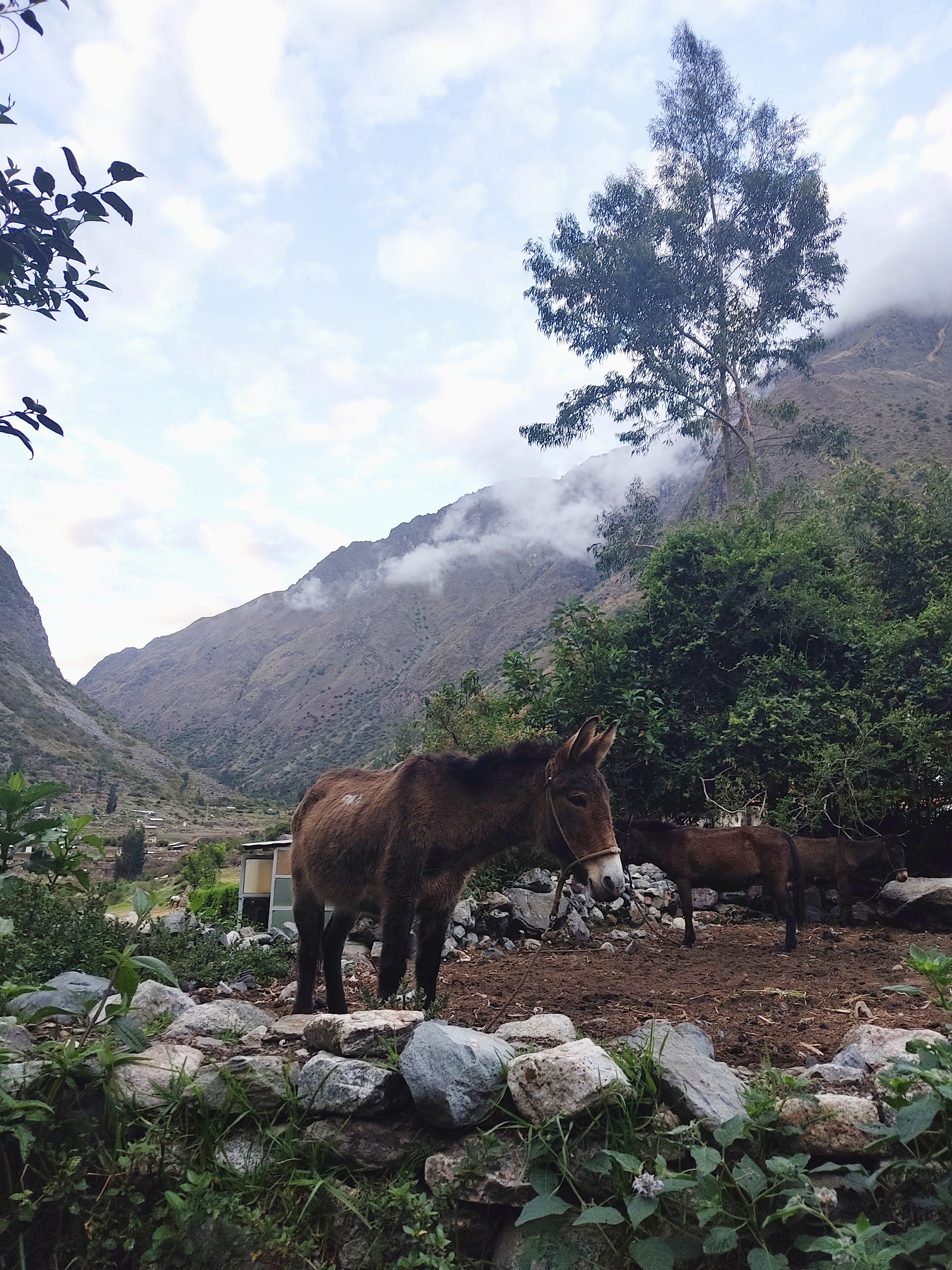
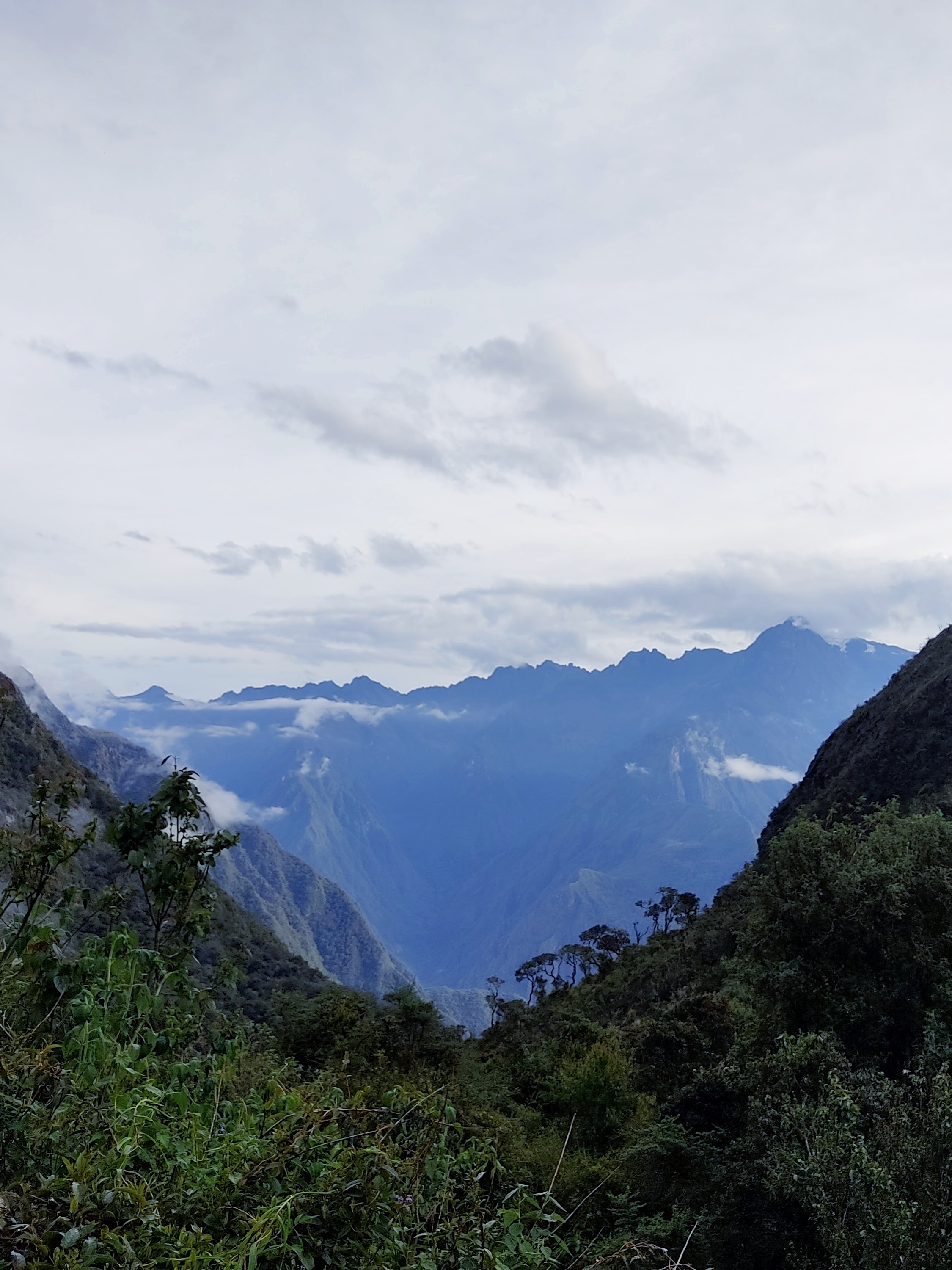
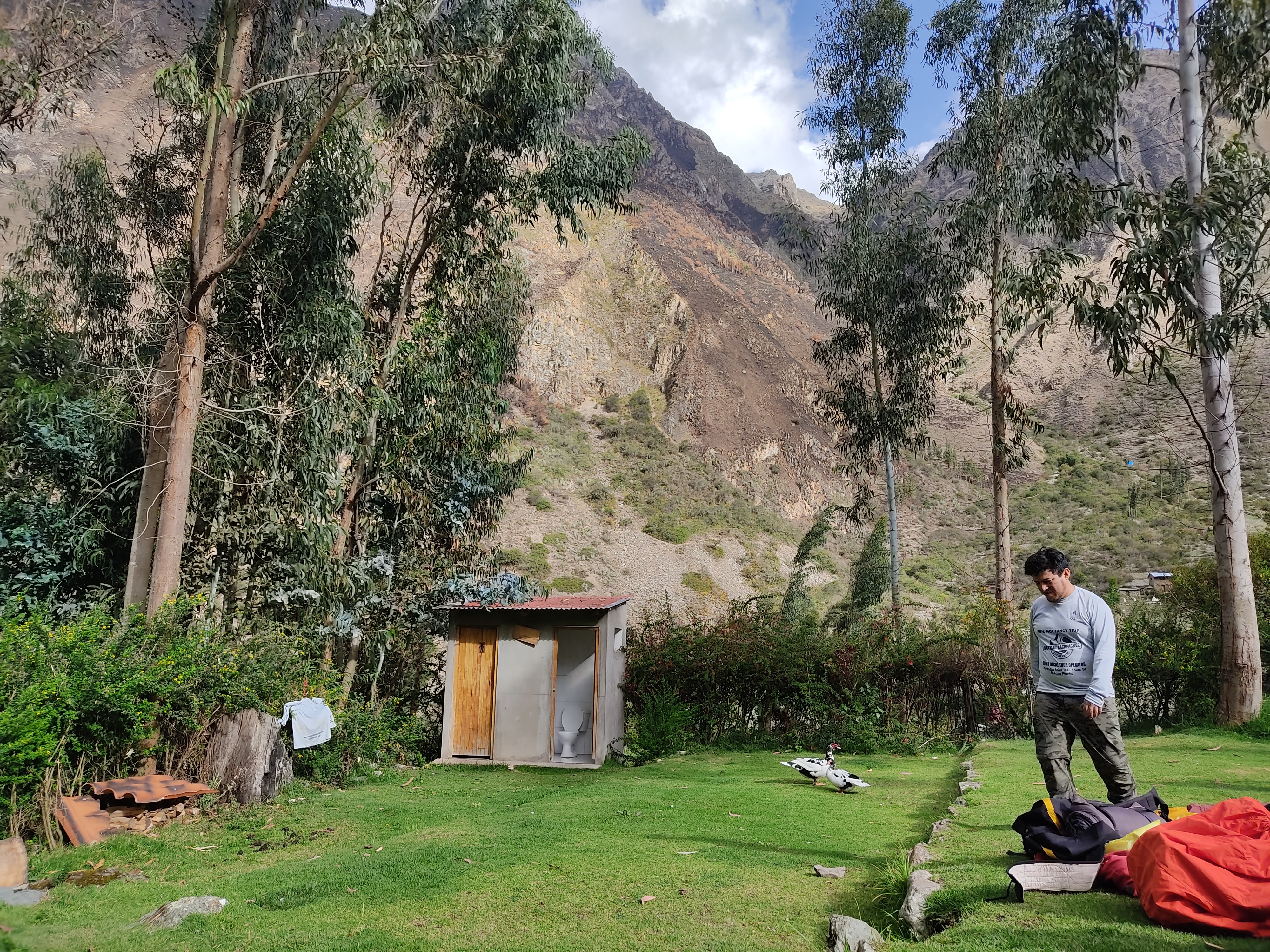
After being on the mountains, we began to follow the trail down into the foliage, venturing further until we were deep into the heart of the rainforest we were looking over the day before. The path twisted and turned through the trees and around the cliffs, and if we didn't know better we would have thought we had gone the wrong way. The environment was so different to the first day, and it seemed impossible that the Incas would have navigated their way across so many different and challenging terrains to get to Machu Picchu. From the second day onwards, we were walking on the original Inca trail, stepping foot on the same stones as the Incan royalty many years before. The path is in very good condition, but at times consists of fiendishly steep steps, or smooth and slippery surfaces.
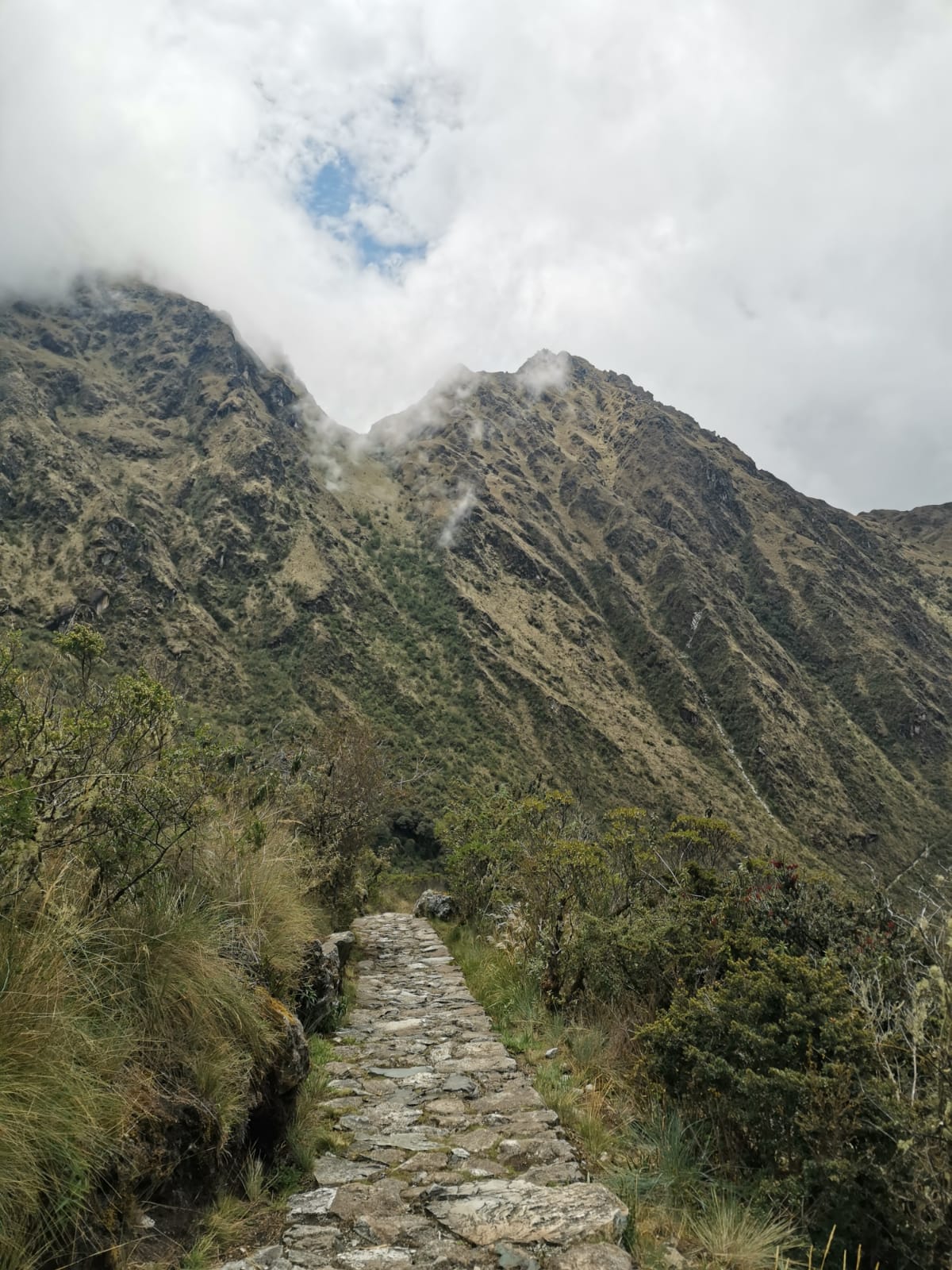
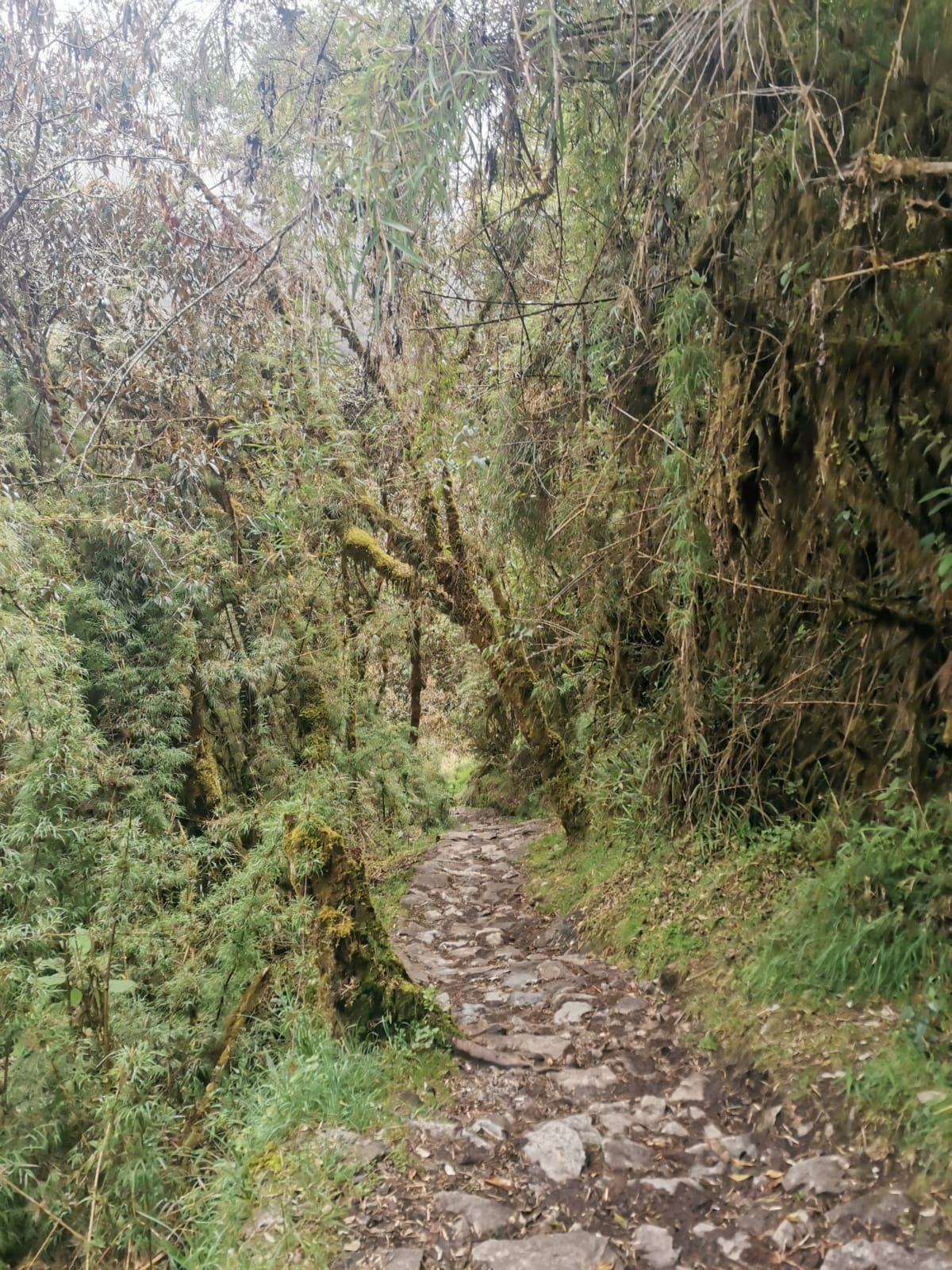
Although there were long uphill stretches in the hot sun (followed by cold and windy mountain passes), we found the hike very manageable, even with all our bags. Four days is plenty of time to cover the distance, so no day is particularly long or gruelling. The scenery along the way is too good a distraction to worry about being tired or having achy legs.
The Porters.

Porters are hired by the tour companies to carry literally everything, from tables and chairs, cooking equipment, tents and food. As soon as we started the walk on the first day, porters came flying past us, carrying bags that were often bigger than they were. They seemed superhuman, carrying everything to the campsites, setting up the tents and preparing the meals, so that by the time we arrived everything was ready.
We were a tiny group of 4 tourists and one guide, and had 6 porters to assist us. The porters were all farmers from villages very closeThe porters usually pick their own colleagues to work alongside, and our group were all friends who had been working on the trail for a long time. to each other. Remarkably, all but one of our porters was over 50 years old, and the oldest was 68! Our guide explained that they used to carry up to 50kg each, but new regulationsWe are not sure how much the companies stick to these regulations, as lots of the bags looked extremely hefty. One of our group members attenpted to carry one of our porter's bags, and he couldn't lift it off the ground. meant they could only take 25kg. Despite the improvements to these regulations, we discovered that all the porters are still paid relatively low salaries, and so we think it is highly important to tip them as much as possible at the end of your trek.
Between the hills, the heat and carrying the huge bags, our porters had to take more frequent breaks on the second day. We felt bad, because it was as if they had an expectationOur guide frequently insisted we stop for breaks, despite our group feeling able to carry on, and we suspect this was to give our porters time to get ahead. to get to the campsite ahead of time and prepare everything for us. We truly hope they knew how appreciated they were.
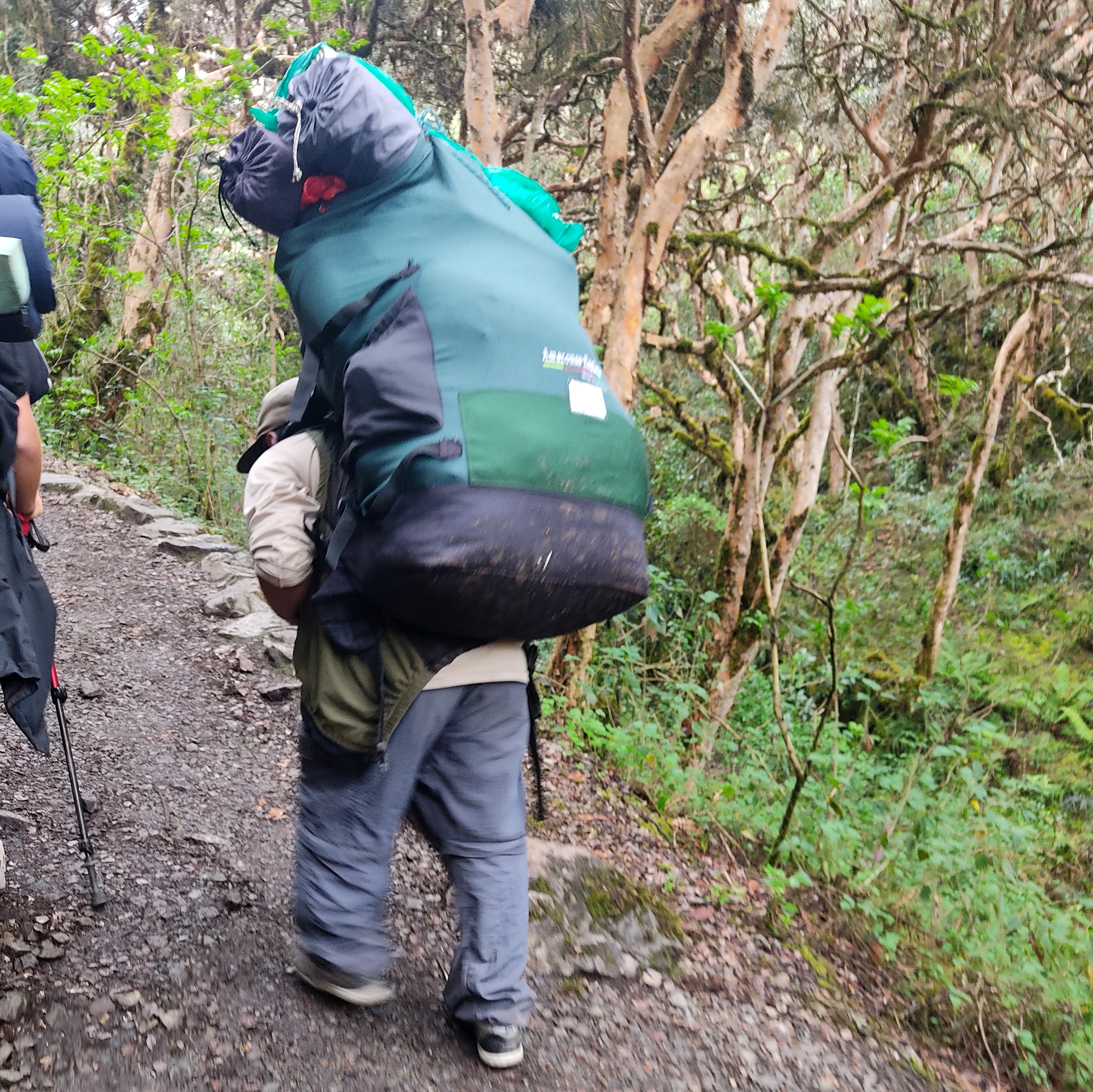
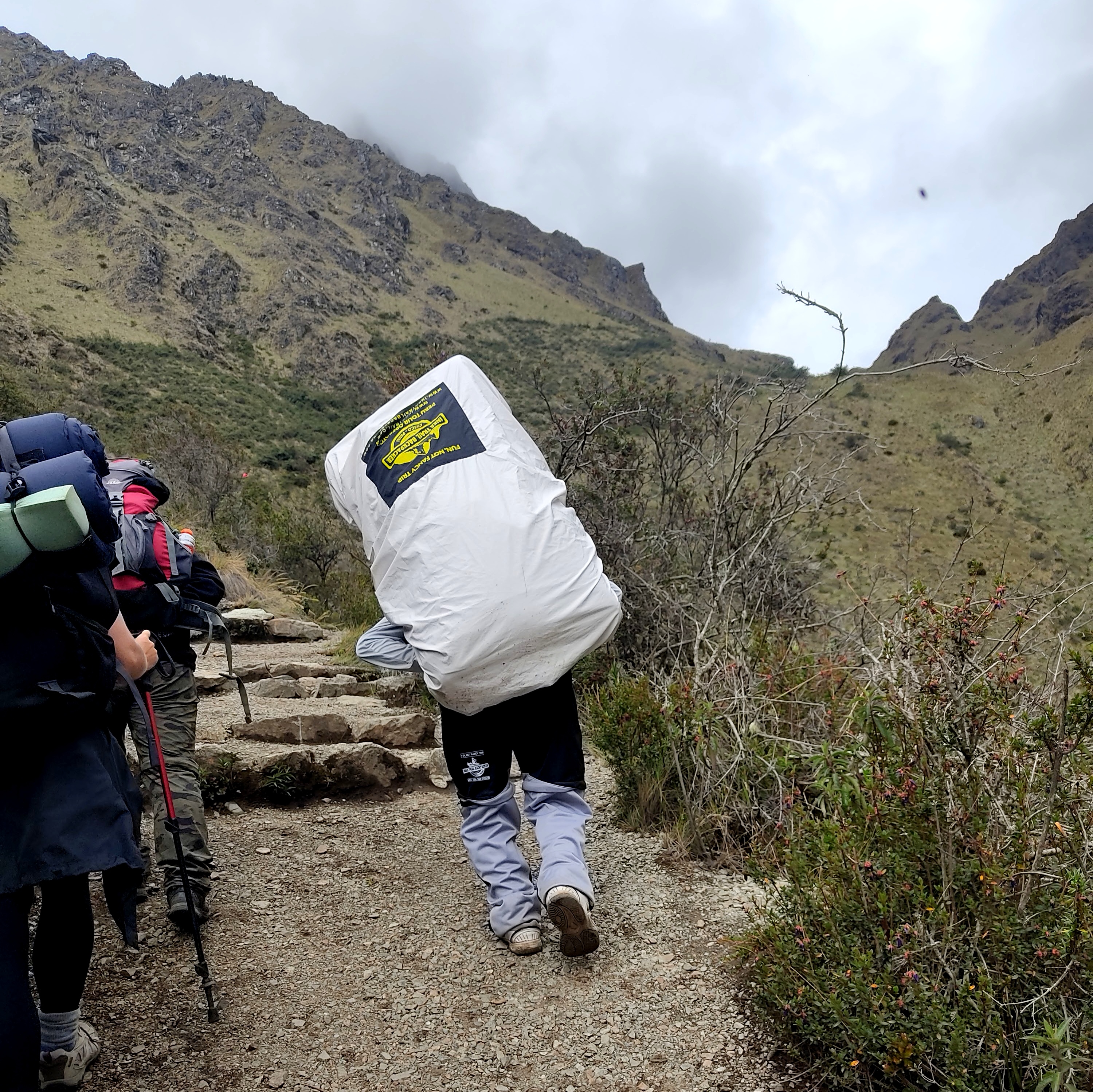
At one point we caught up with one of the porters who had fallen behind from our group. We rested with him for a minute as he caught his breath (trying to converse in our limited spanish), and then the three of us carried on up the hill, encouraging each other. When we eventually made it to the top, we all gave high-fives and enjoyed the view.
Despite not getting paid much for their efforts the porters do genuinely seem to enjoy their time at the campsites, always chatting and smiling, and our guide said a lot of them like to use it as an excuse to get away from their families for a few days! On the final morning, our guide asked us to wake up at 3:30am, so that the porters had time to pack up our tents before running down the hill to catch the only train back to Cusco at 5:30am. We obliged, since it was the least we could do, and waited in the dark until 5:30 before we could begin the final days hiking.
The Food.
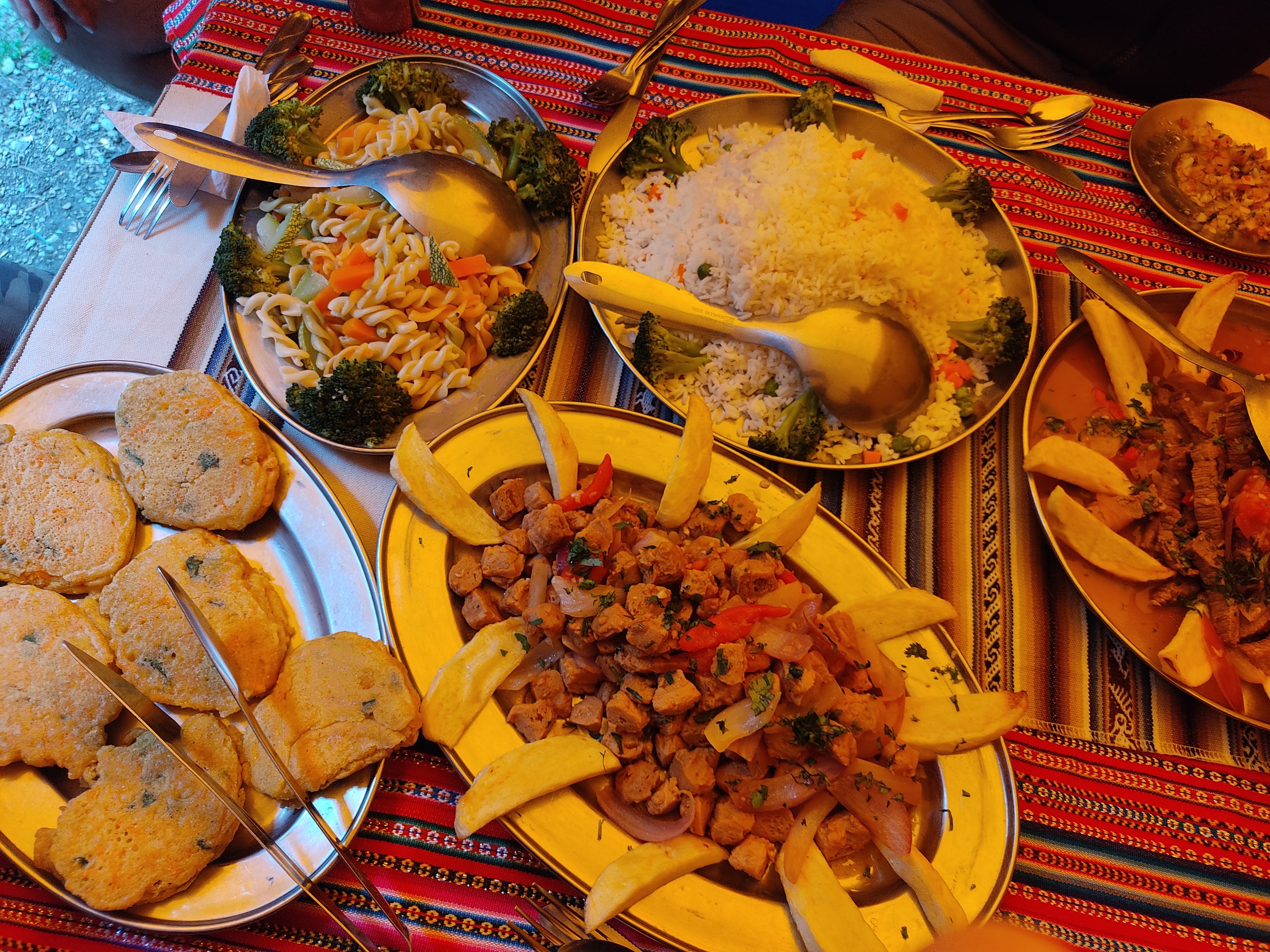
As mentioned above, we were camping in some incredibly remote places, between mountains and through jungles, so the food options had to be quite limited, right? Wrong. In addition to all the incredible work the porters do, they also cooked us 3 meals a day. Although our group was only small, we had never seen so much food prepared for us. Every meal was a buffet. Lunch and dinner were served with a soup starter, followed by rice, pasta, quinoa, vegetables, pastries, meat, fish, even pizza on one day, and endless hot drinks. Every evening, before dinner, we had a 'happy hour' (a platter of popcorn, snacks, and hot chocolate). And somehow the porters were able to cook all of it in a tent on the side of a remote mountain, with no electricity or running water.

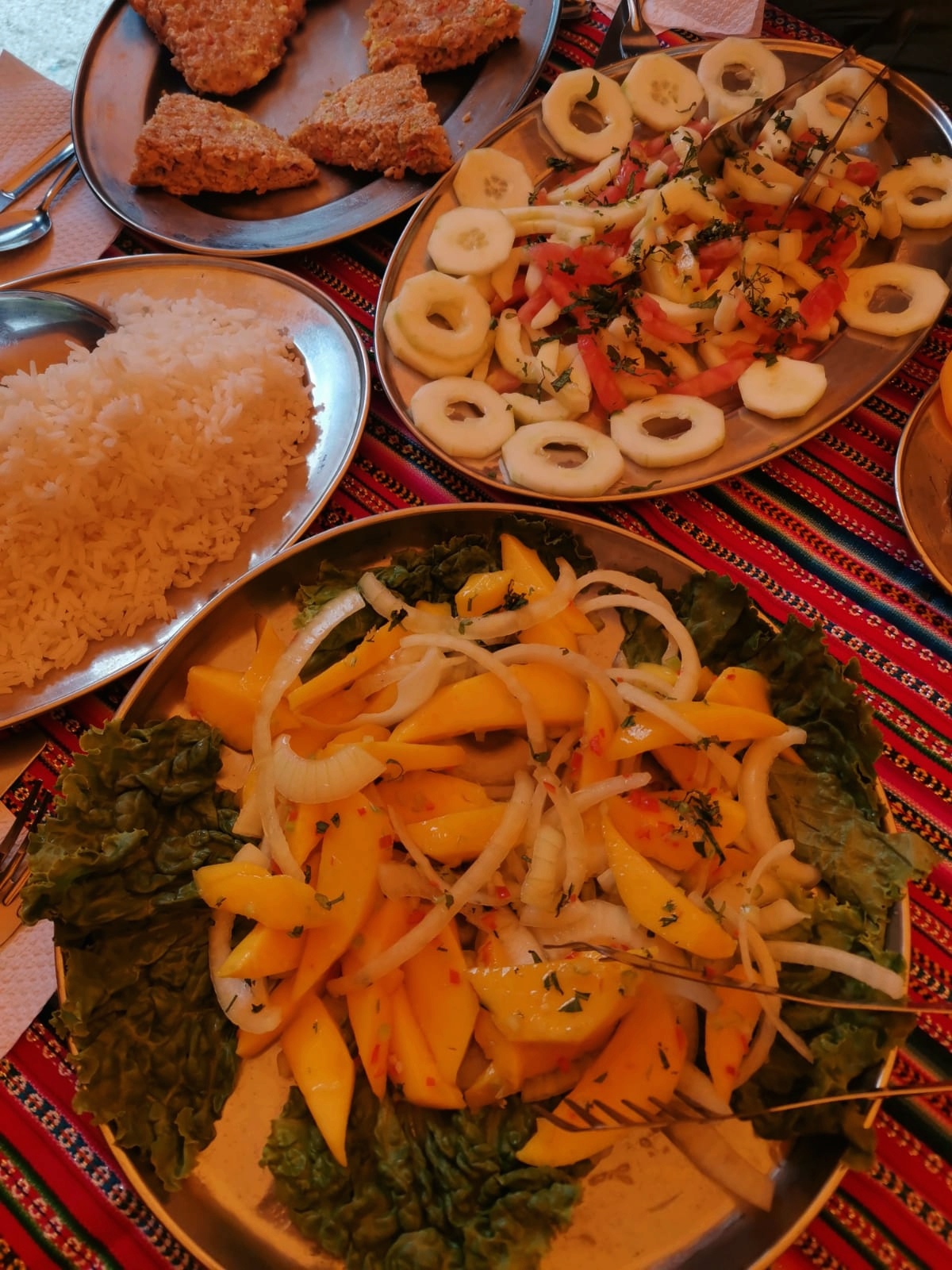
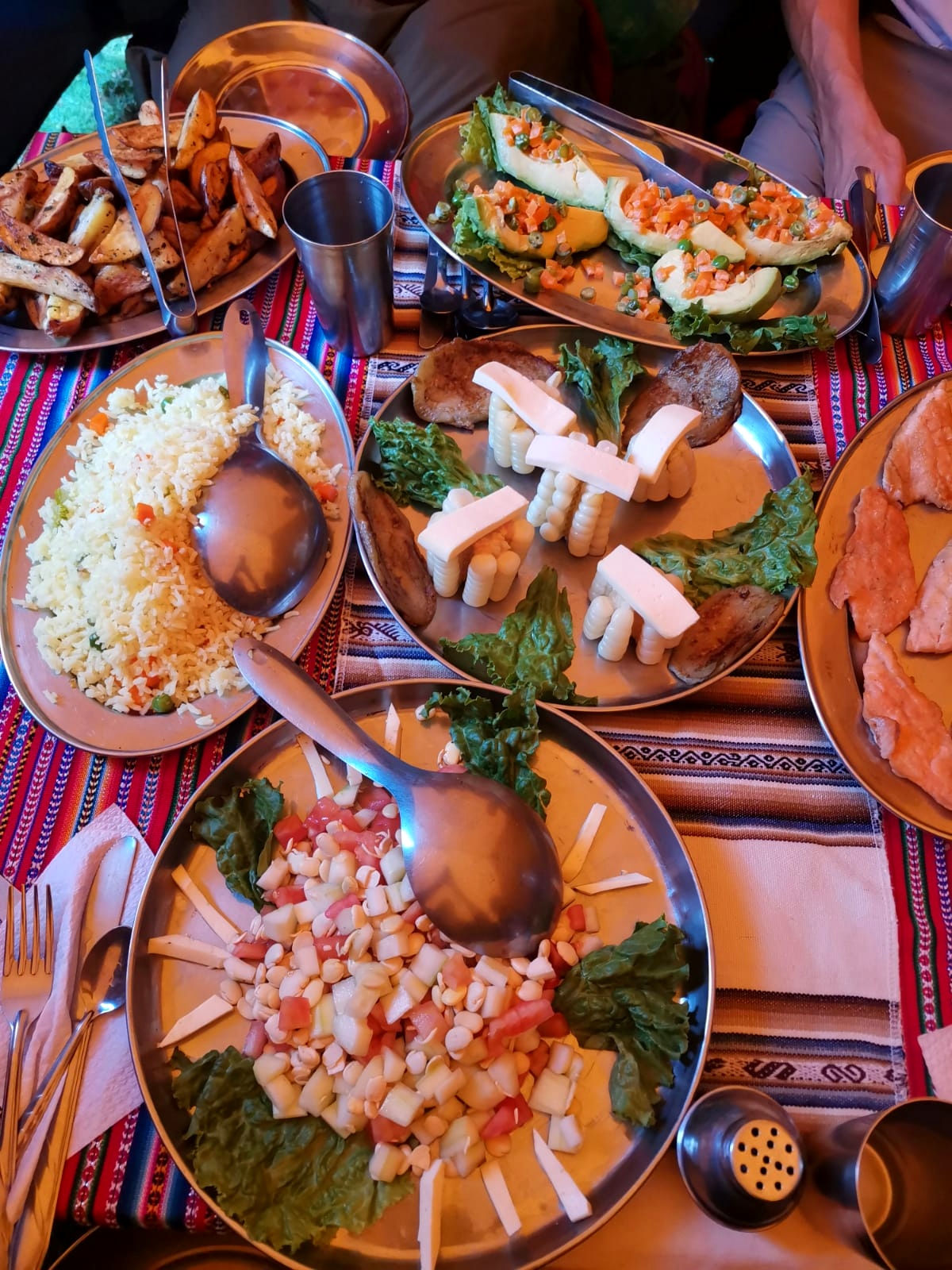
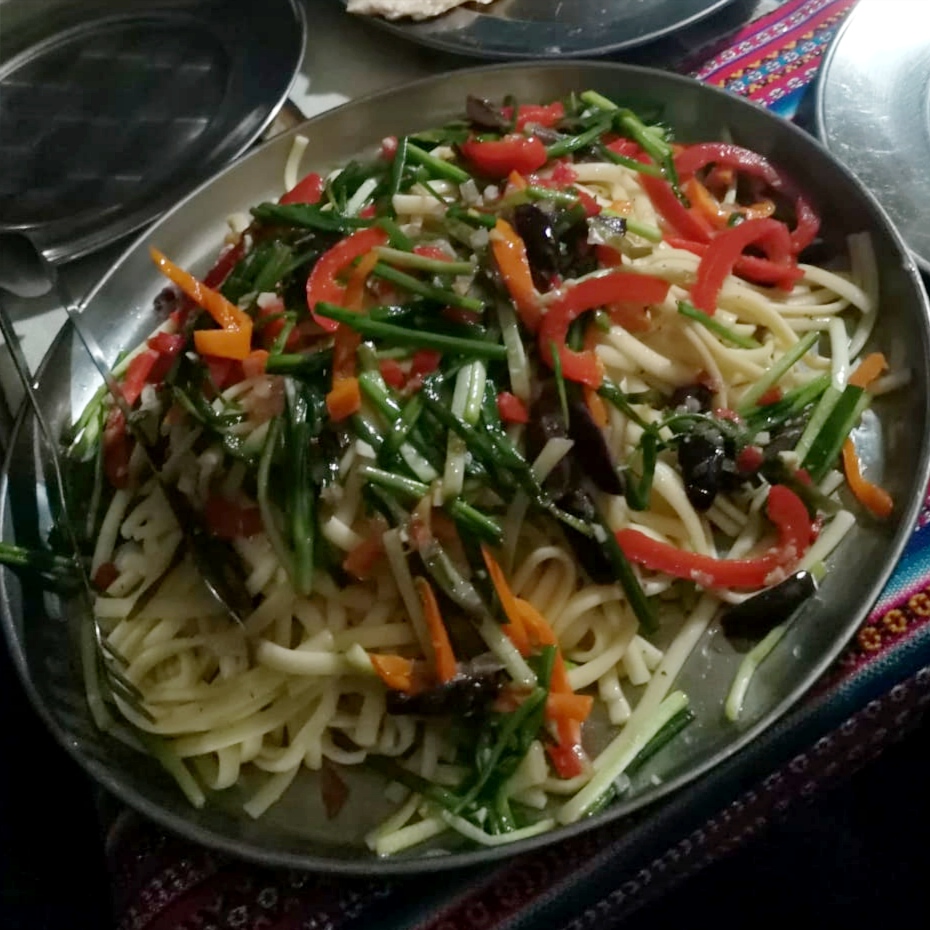
The chef also went above and beyond our expectations to cater for our vegetarian diets, with dishes like mango ceviche, BBQ aubergine, and soya lomo saltado. Overall, our 4 days on the Inca trail were some of our most well fed days on the whole trip. The amount of work the porters put in and the level of service they provided was one of the main reasons why we didn't mind paying a lot for the trek.
The Archaeological Sites.
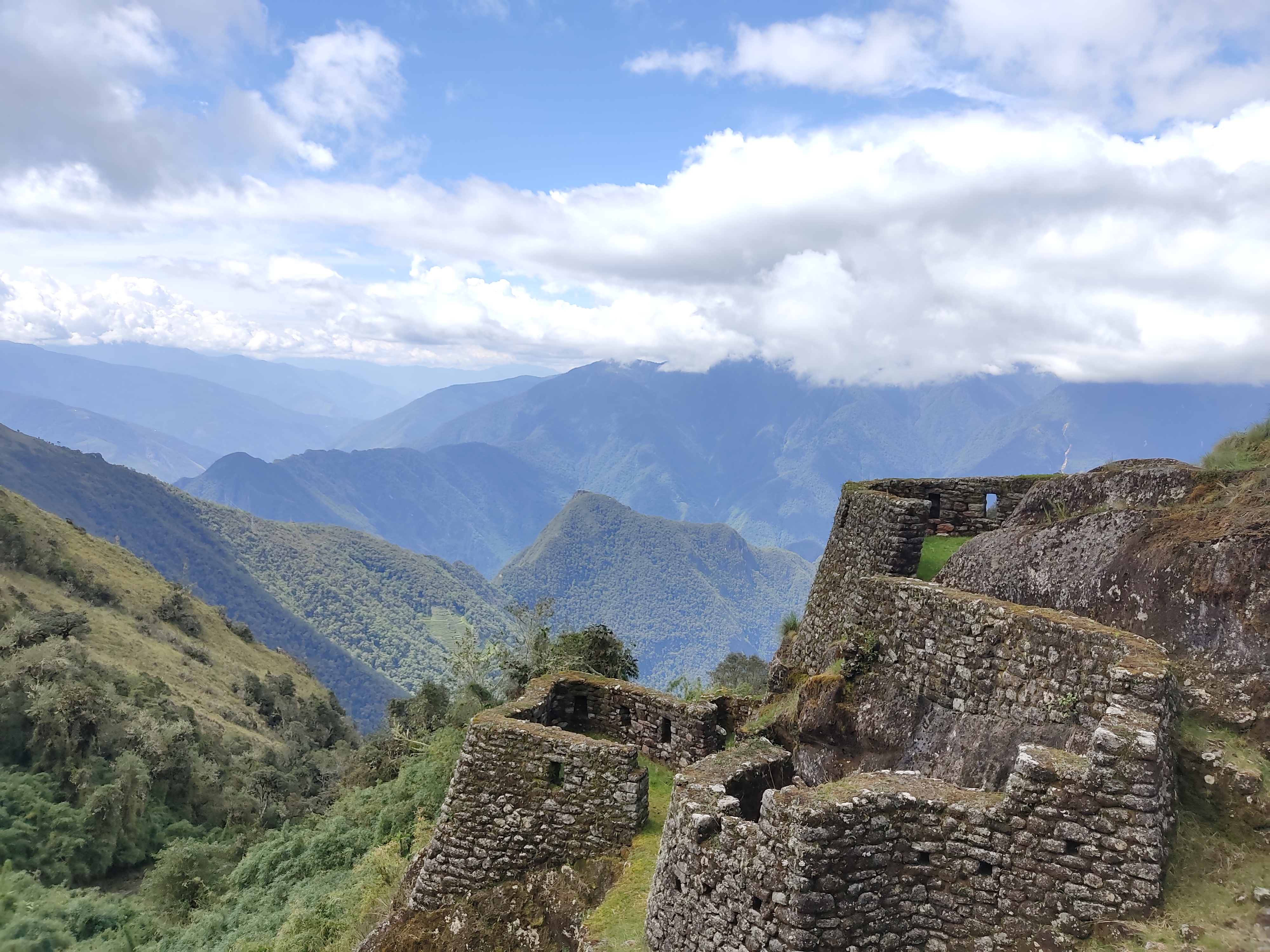
Obviously, Machu Picchu is the most well known archaeological site in Peru, and is one of the main selling points of the Inca trail. What we didn't know about though, were the dozens of smaller Inca ruins that can be found along the way. From the first few kilometres, right up until the sun gate of Machu Picchu, we were constantly passing ancient Incan sites. Our guide stopped at them all to give some details about how they were built, their discovery, and what their significance might have been. We learned an incredible amount in the 4 days, so that by the time we reached Machu Picchu, we felt like experts already.
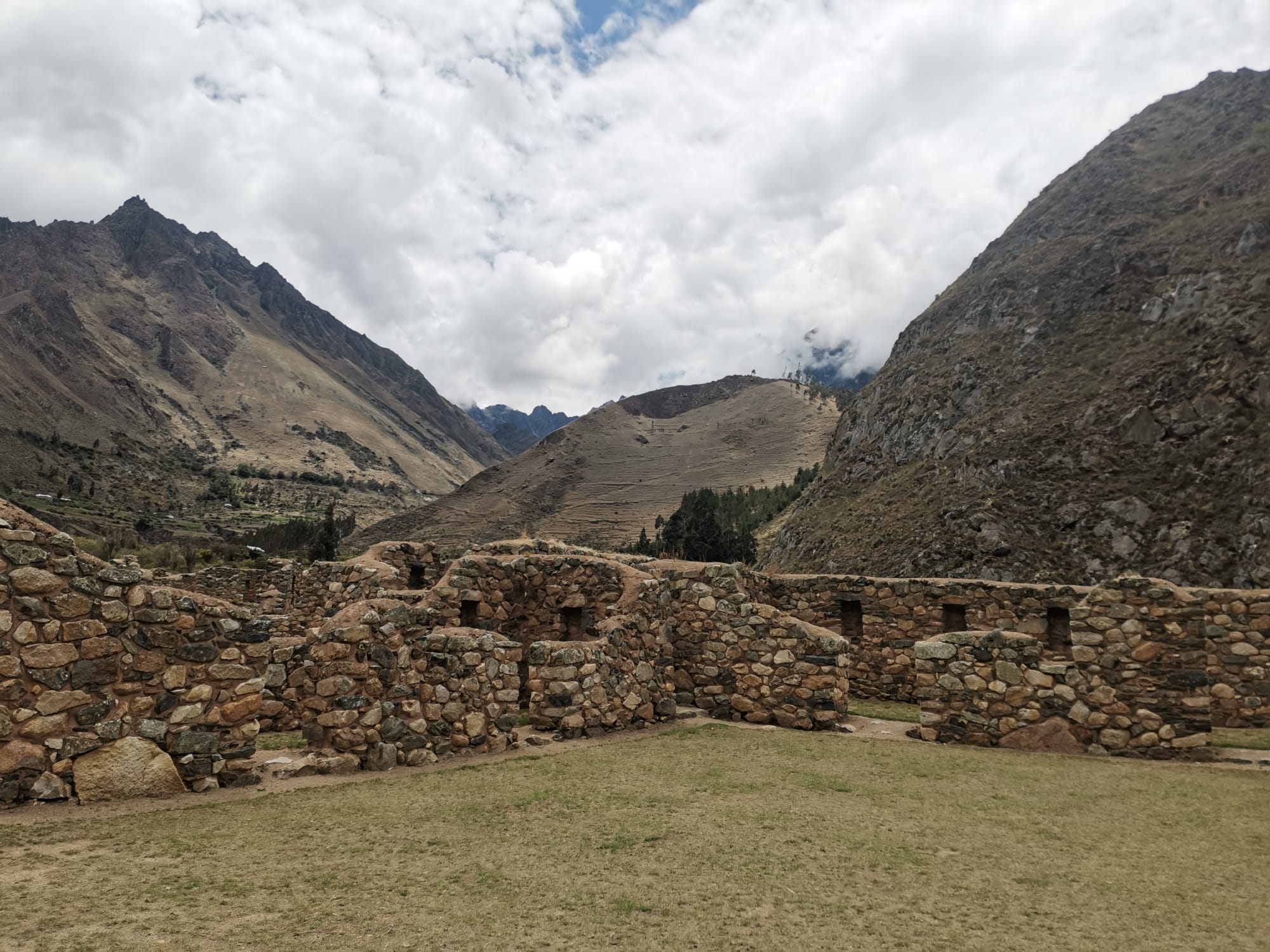
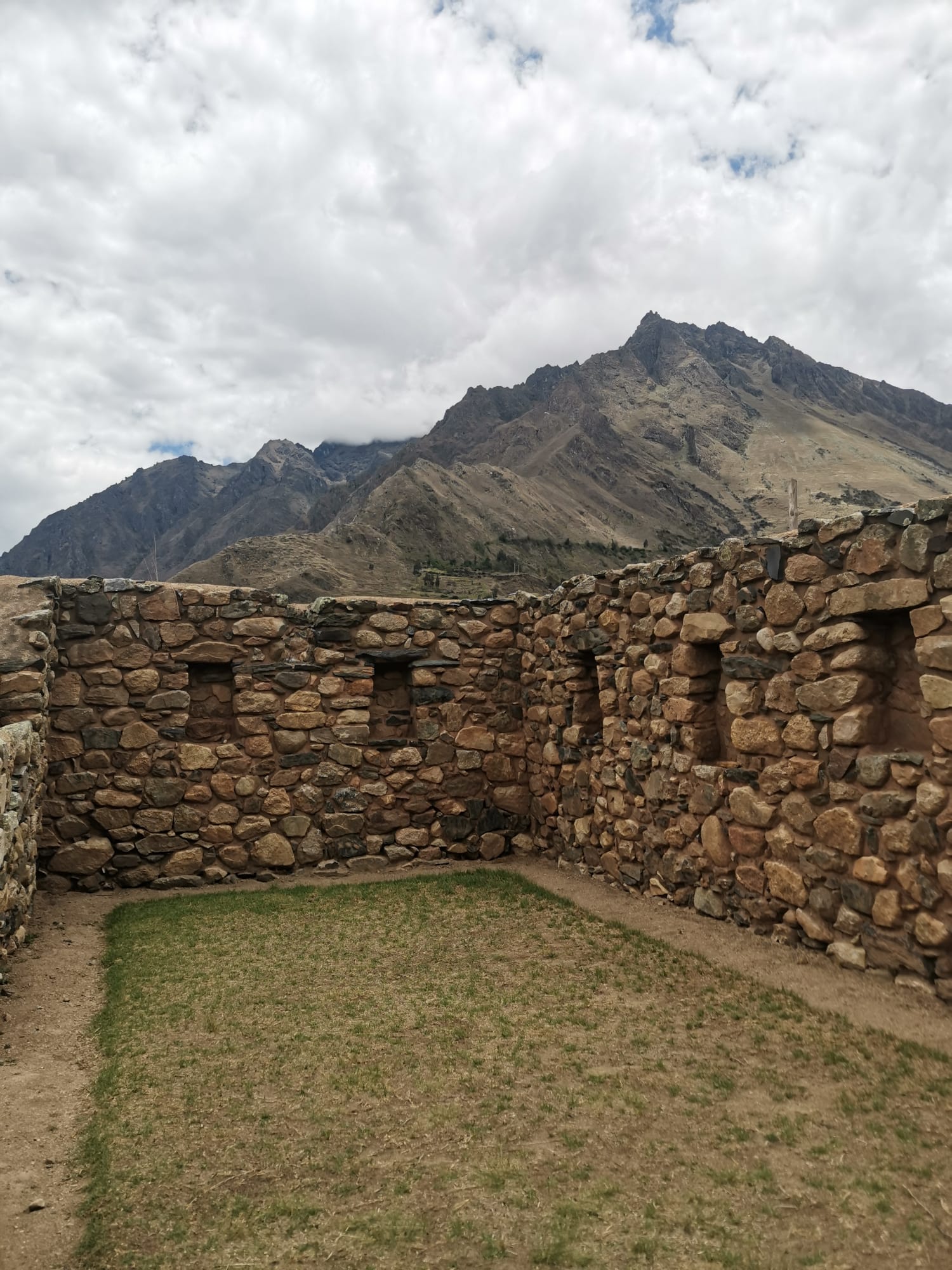
As we progressed along the trail and passed more archaeological sites, we slowly learned about the history and culture of the Incan empire. Most of the archaeological sites we saw were once religious places, used by the Incas to pay tribute on their pilgrimage to Machu Picchu, but some also acted as small outposts to mark the territory that the Incan empire conquered. For the Incas, the most important deity was the sun, which they worshipped devoutly. Accordingly, a lot of the structures we visited along the Inca trail were carefully designed to align with the position of the sun at important dates, such as Runkurakay (meaning 'egg-shaped'), whose windows are aligned to frame the sunrise over the mountains at summer solstice and illuminate the building's interior. Additionally, the buildings of Sayacmara (meaning 'inaccessible town') are positioned atop a cliff, aligned so that they are illuminated by the morning sun at winter solstice, while the surroundings lie in darkness. Furthermore, this structure projects the shape of a pumaThe Incas believed in three sacred animals: the puma as the guardian of the Earth, the condor as the guardian of the skies, and the snake as the guardian of the underworld. There is a temple dedicated to the condor at Machu Picchu. head onto the cliffs behind during sunrise. It was incredible to hear about both the Incas beliefs, and their sophisticated construction methods that allowed such subtle and precise phenomenons.
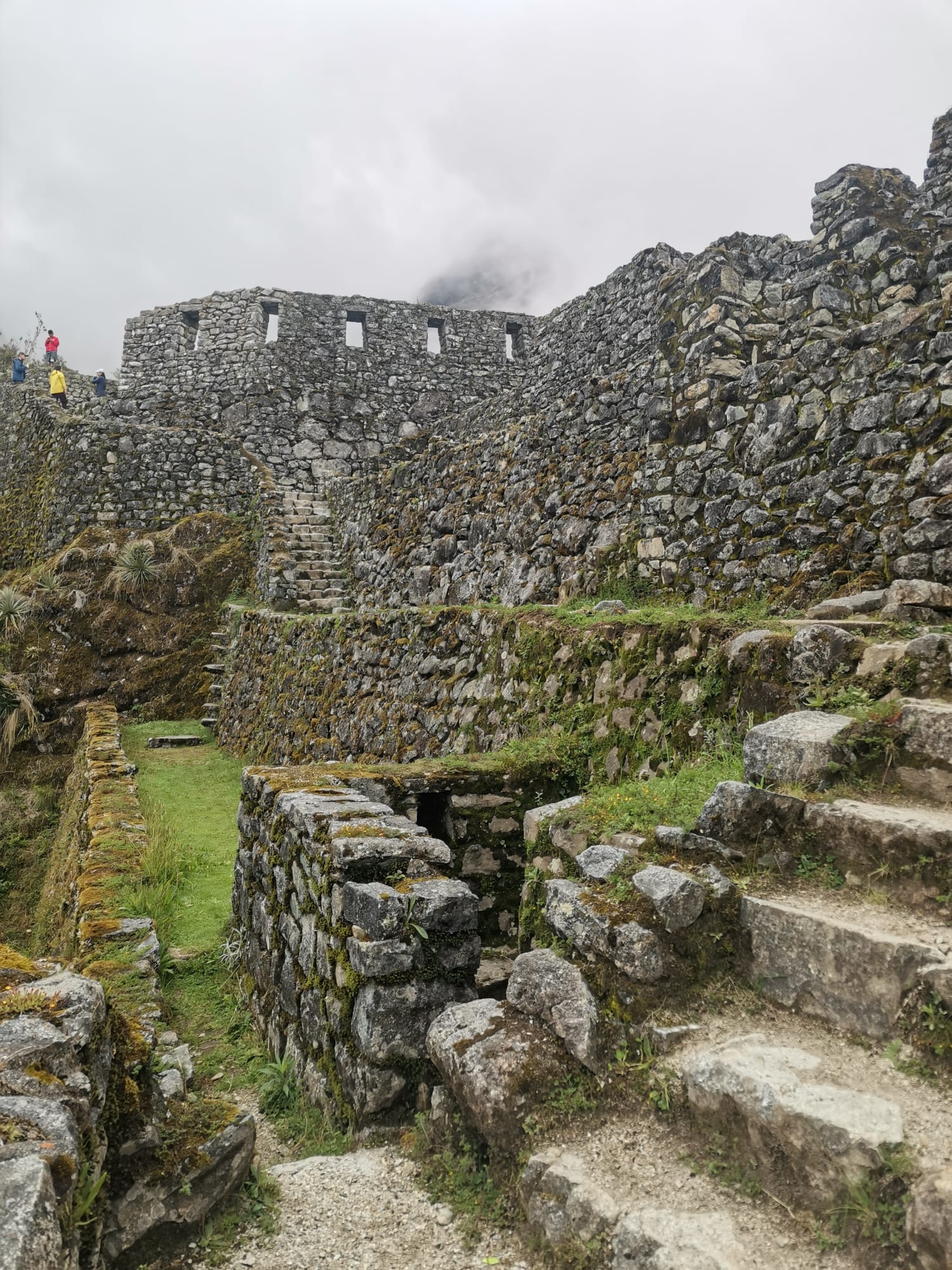
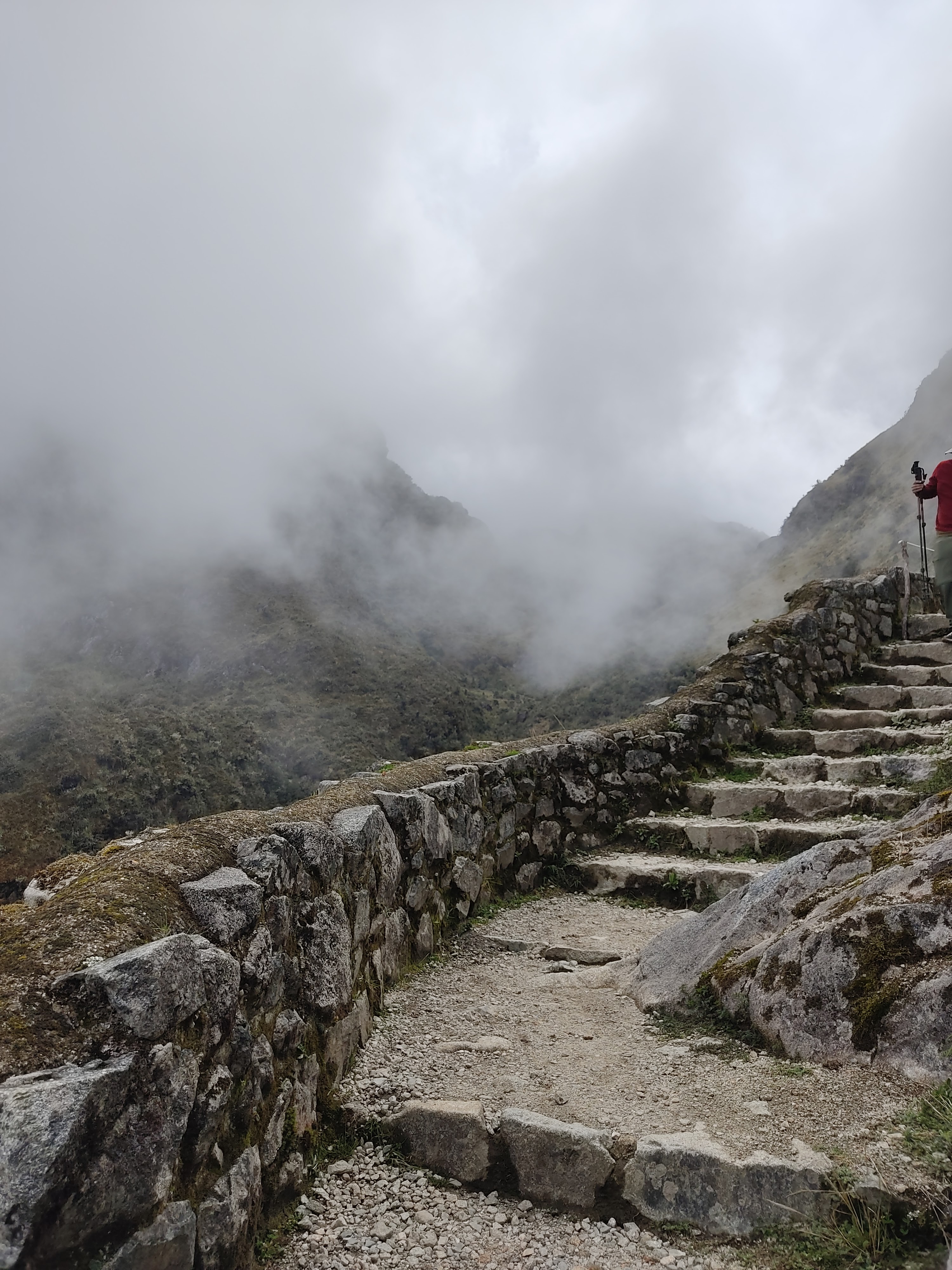
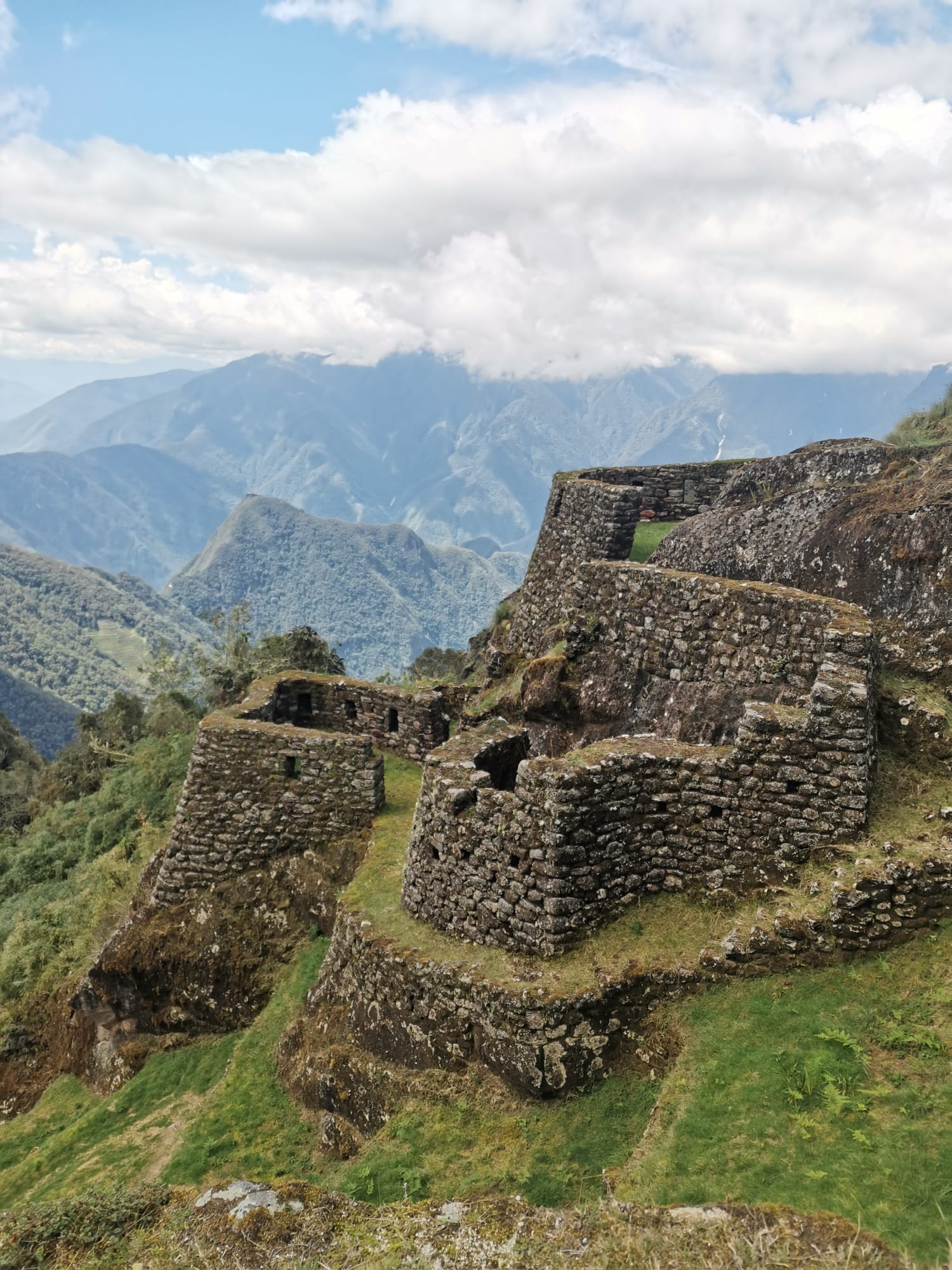

Most of these ruins are found at the top of the highest passes, and so are often shrouded in swirling clouds. The Incas chose these locations because they believed the mountains were important to pachamama or 'mother nature'. Being so hard to access, most of these sites were self-sufficient, with farming terraces and houses and waterways which still collect rainwater from the mountains to this day. On the third day, we passed Phuyupatamarca, or 'citadel above the clouds', which was likely an important religious stop on the pilgrimage to Machu Picchu. Unusually, this temple appeared to be dedicated to the stars, rather than the sun, and features a map of the Southern Cross constellation etched into the rocks.

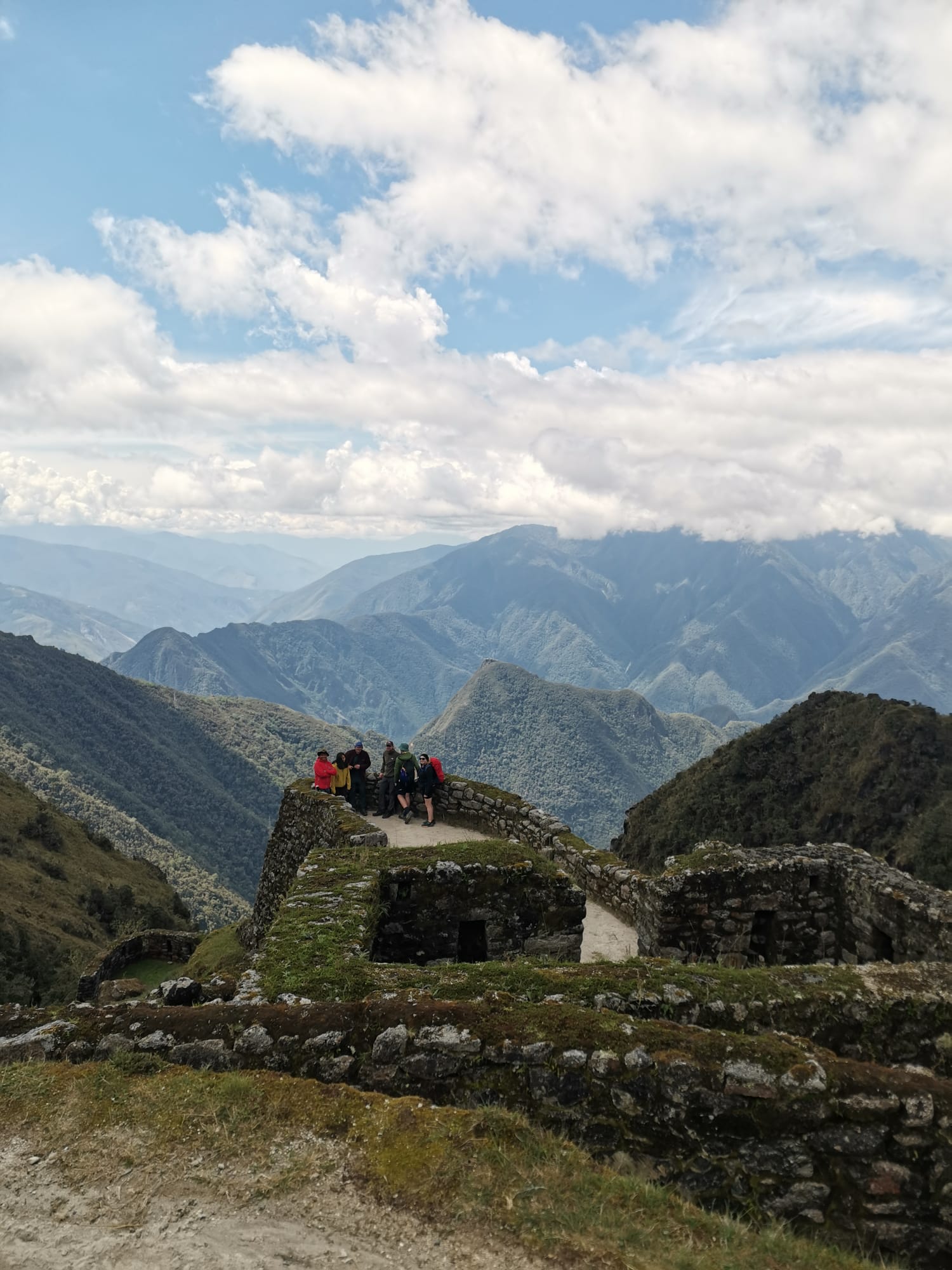

Many of these sites had some form of Incan farming terrace to provide food for the inhabitants. Just before we reached Machu Picchu, we passed the most impressive examples of this at Inti Pata (meaning 'terrace of the sun') and Wiñay Wanya (meaning 'forever young'). These two sites were huge farming terraces, stretching over 200m up the mountainside. Each level was at a slightly different height up the mountain, to grow crops like potato, maize, quinoa, and coca, which all require a different altitude to grow successfully. As such, these huge sites probably provided a range of crops to the city of Machu Picchu, and today they provide tourists with some of the best views of the Urubamba valley on the whole Inca trail, as well as an insight into the detailed agricultural knowledge of the Incas.
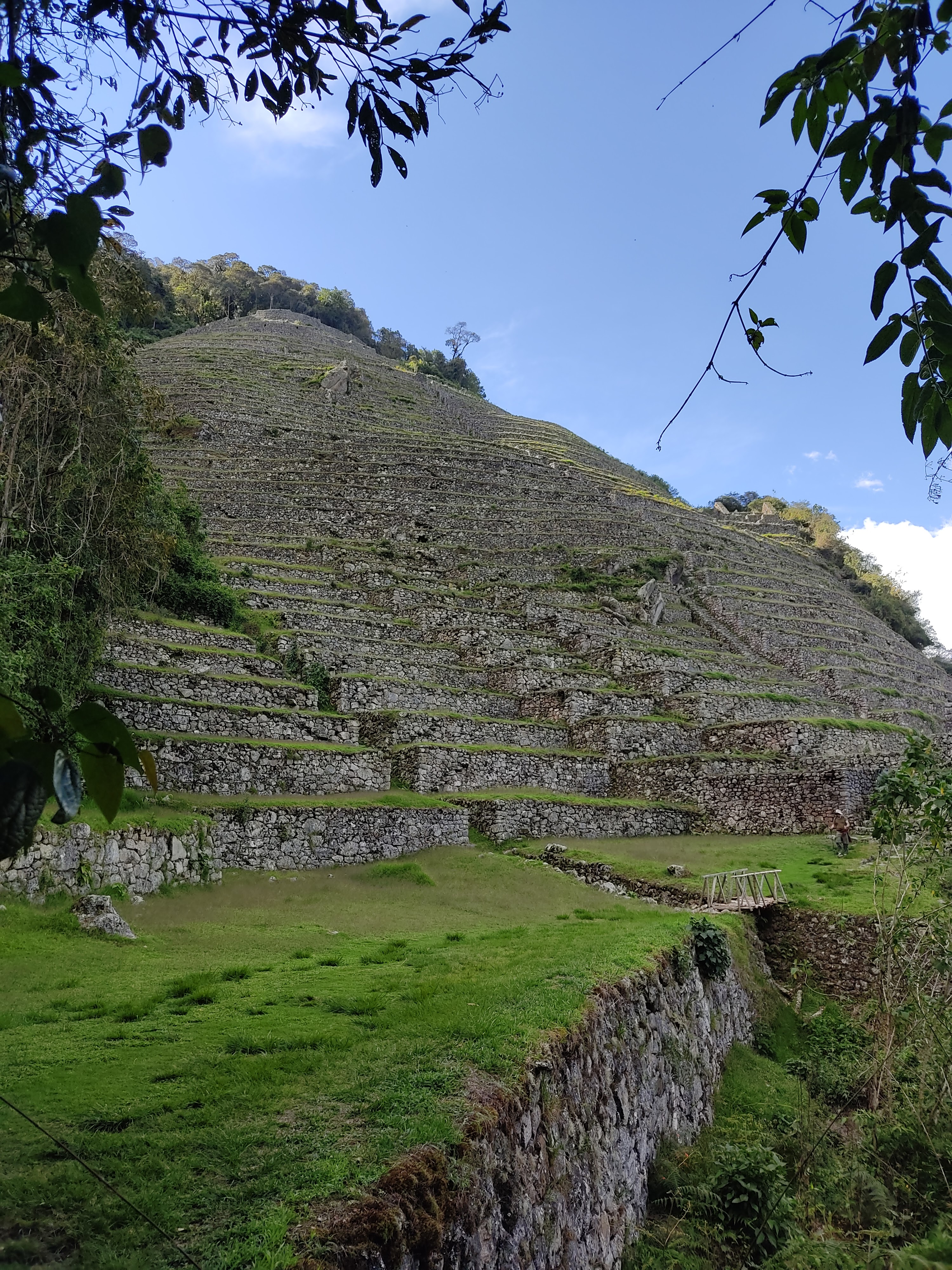
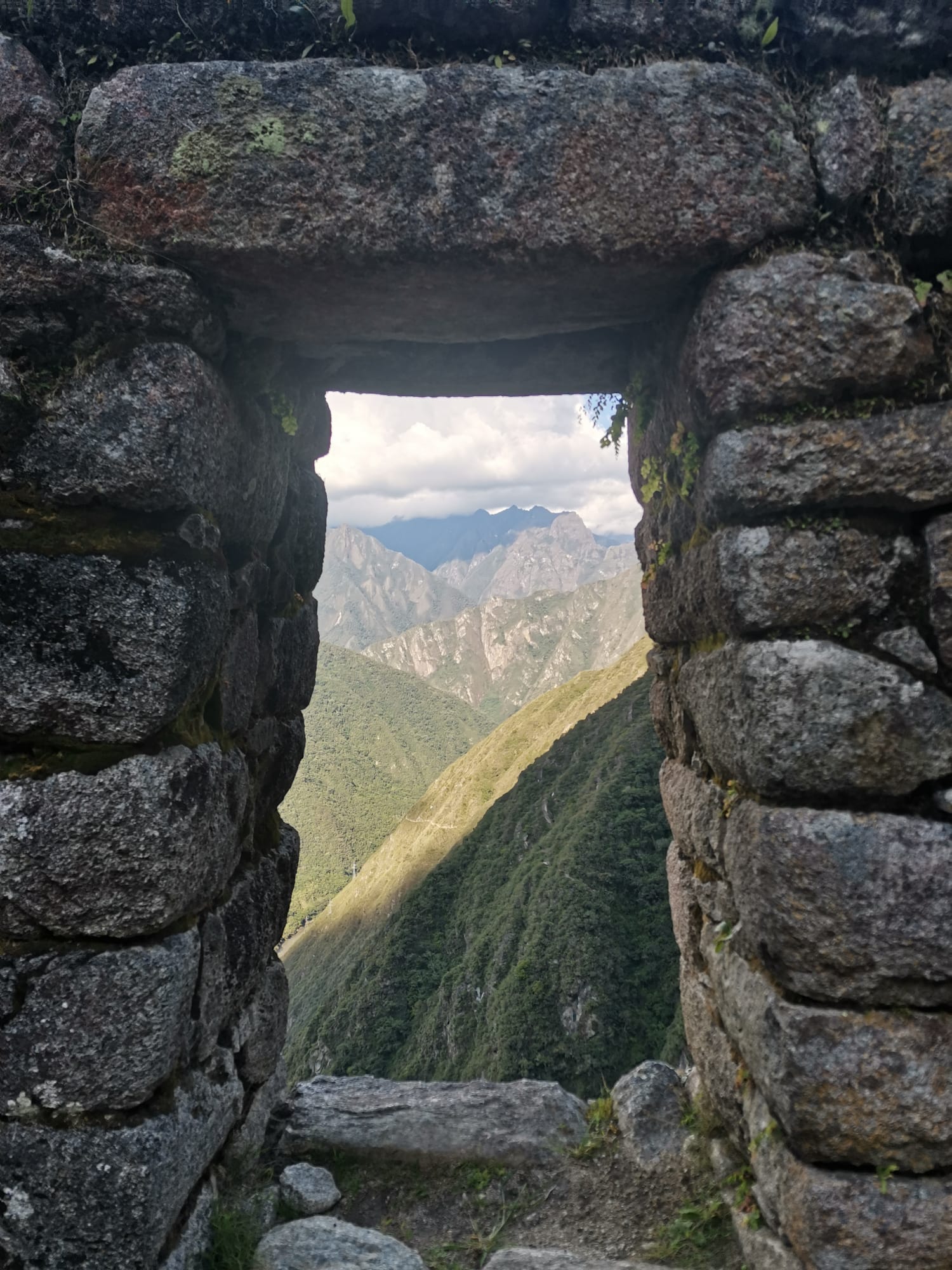
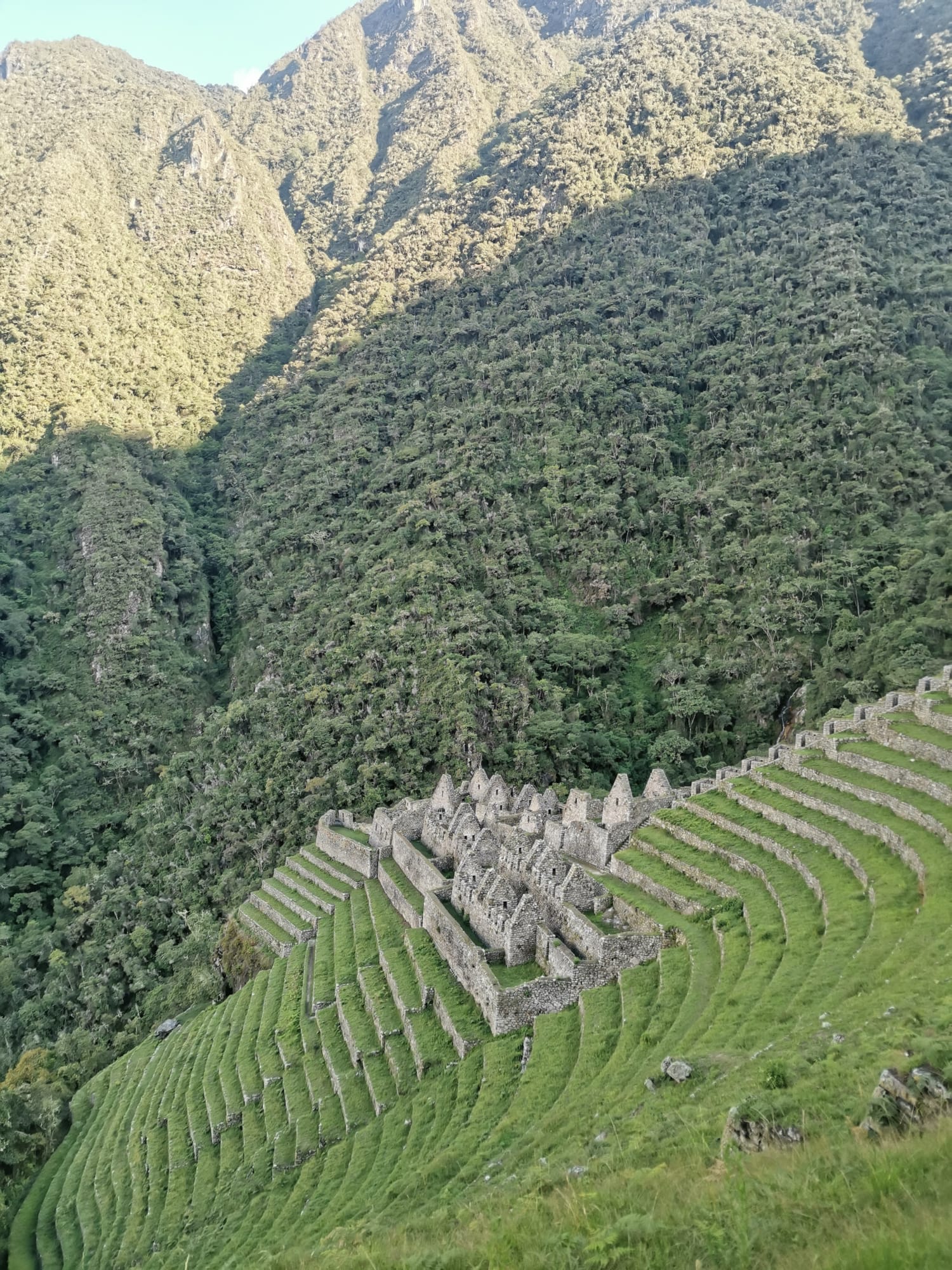
From the small checkpoints and citadels on the first days, to the massive agricultural centres next to the final campsite, the archaeological sites along the Inca trail made the journey so interesting, always suprising us with more history and whetting our apetites for Machu Picchu on the final day.
Machu Picchu.
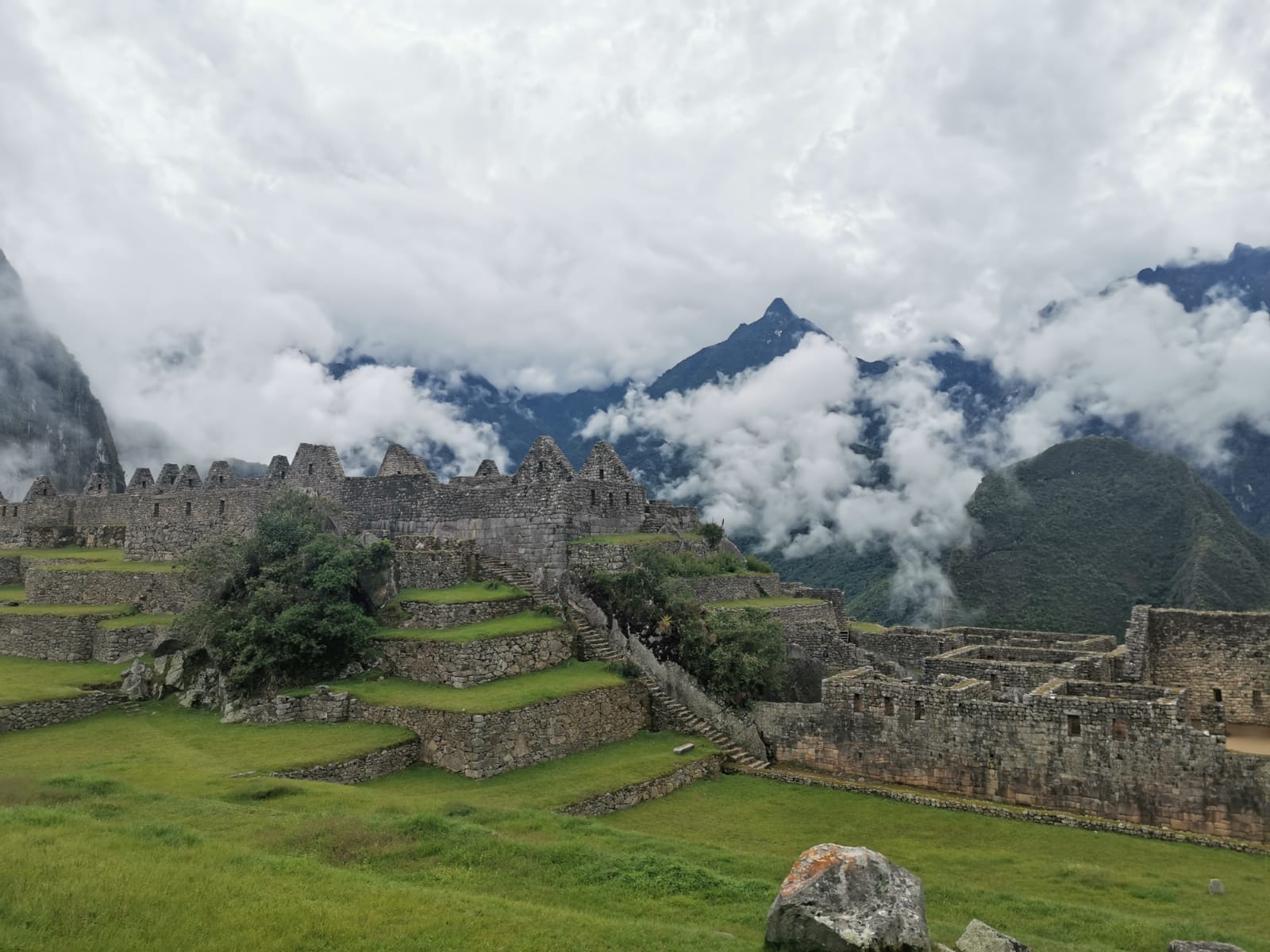
The highlight of the Inca trail is Machu Picchu. Thousands of people visit the site each day, but most of them take the bus from the touristy town of Aguas Caliente. After spending 3 days hiking through the Andes, with the Incan ruins growing more impressive and the panoramic views becoming even more breathtaking with each passing day, it felt like everything was culminating to Machu Picchu. From the third day of the trek, we could see Machu Picchu mountain in the distance - the finish line was in sight, but the ruins themselves were still obscured by the mountain. Of course, the journey is much more than just the destination, and every step of the Inca trail was incredible, but we could feel an extra sense of excitement as we set up camp for the third and final night.
After waiting in the dark to begin the final section of the trail, we walked for about an hour to reach the famous 'Inti Punku'The Sun Gate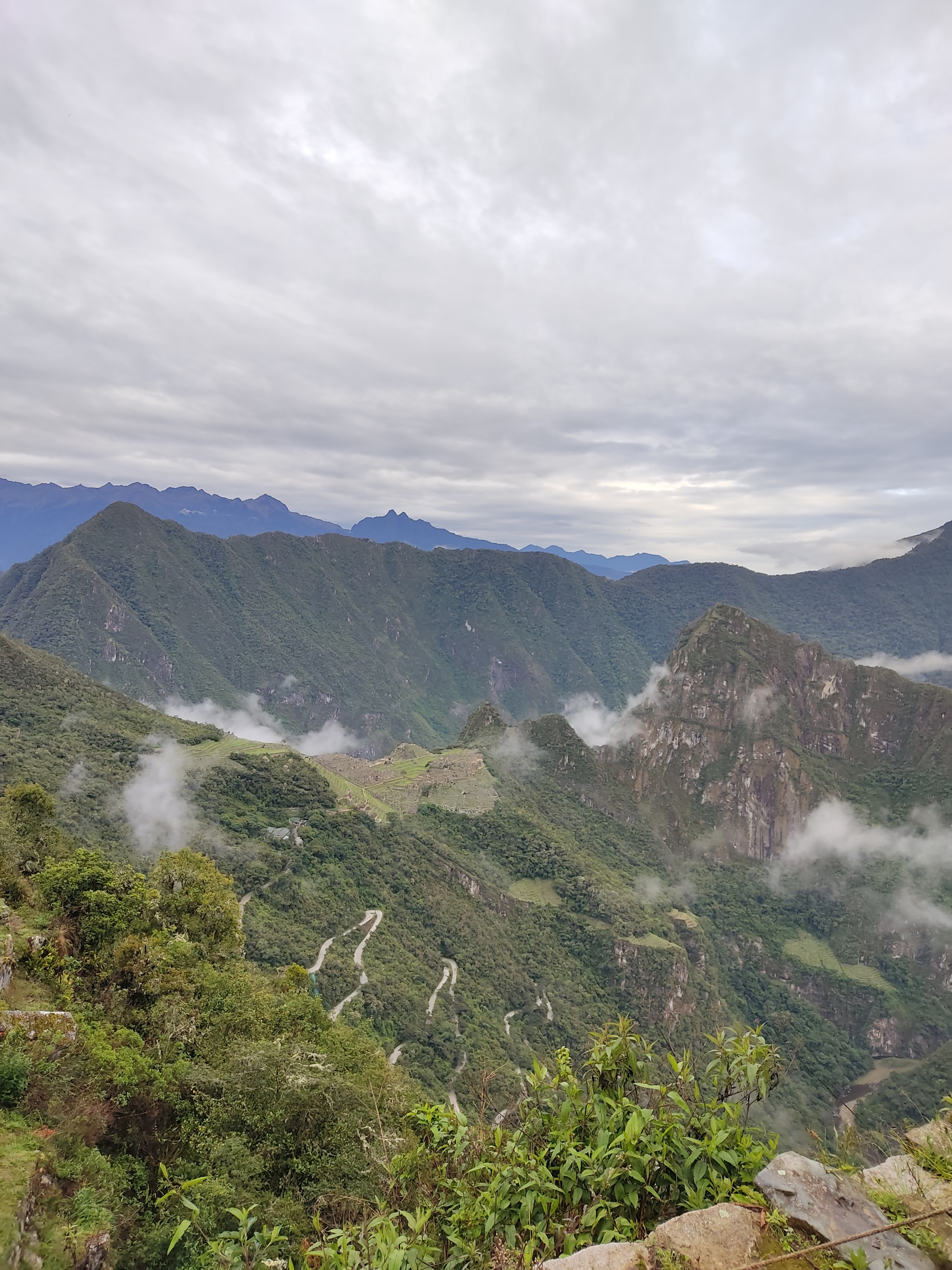 The 'Inti Punku' or sun gate is where pilgrims got their first view of Machu Picchu in the Incan times. Like many important Incan structures, it is orientated towards the sun. Sitting high up on the hills, it allows a beam of sunlight to shine down and illiminate the sun temple of Machu Picchu during summer solstice.. From here, we could see Machu Picchu glistening in the morning sun, perched on a natural pedestal above a sea of clouds. This was when the impossibility of Machu Picchu's location hit us. The Incan city was built on top of a steep peak, deep within the rainforest, completely surrounded by a ring of tall mountains. It is clear to see why the Incas chose this place as the home of one of their most sacred cities.
The 'Inti Punku' or sun gate is where pilgrims got their first view of Machu Picchu in the Incan times. Like many important Incan structures, it is orientated towards the sun. Sitting high up on the hills, it allows a beam of sunlight to shine down and illiminate the sun temple of Machu Picchu during summer solstice.. From here, we could see Machu Picchu glistening in the morning sun, perched on a natural pedestal above a sea of clouds. This was when the impossibility of Machu Picchu's location hit us. The Incan city was built on top of a steep peak, deep within the rainforest, completely surrounded by a ring of tall mountains. It is clear to see why the Incas chose this place as the home of one of their most sacred cities.

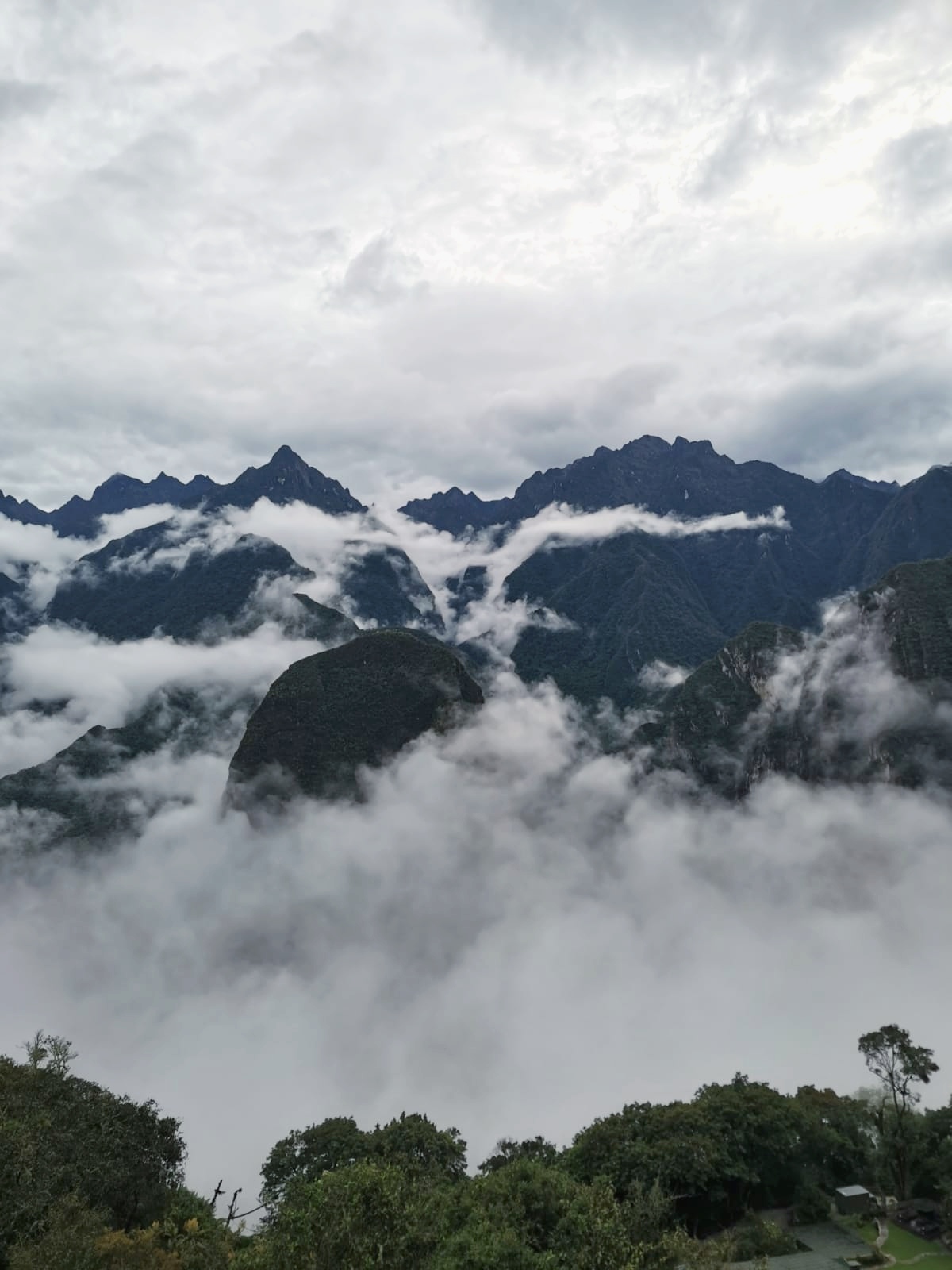
After a few more kilometres walking down the damp and slippery Incan path, we passed the altar where pilgrims would have made their offerings and entered Machu Picchu. From the top level, we were treated to the iconic view of the ruins, with the ancient city spread out below us and the mountains peeking over the foggy clouds. It felt like déjà vu, having seen that photo of Machu Picchu so many times before so we knew exactly what it would look like, and then suddenly realising we were actually there in the spot where it was taken, fully immersed in the scenery that surrounded us. From here, we could picture the immense scale of the city, and imagined what it must have been like for the Incas who lived there.
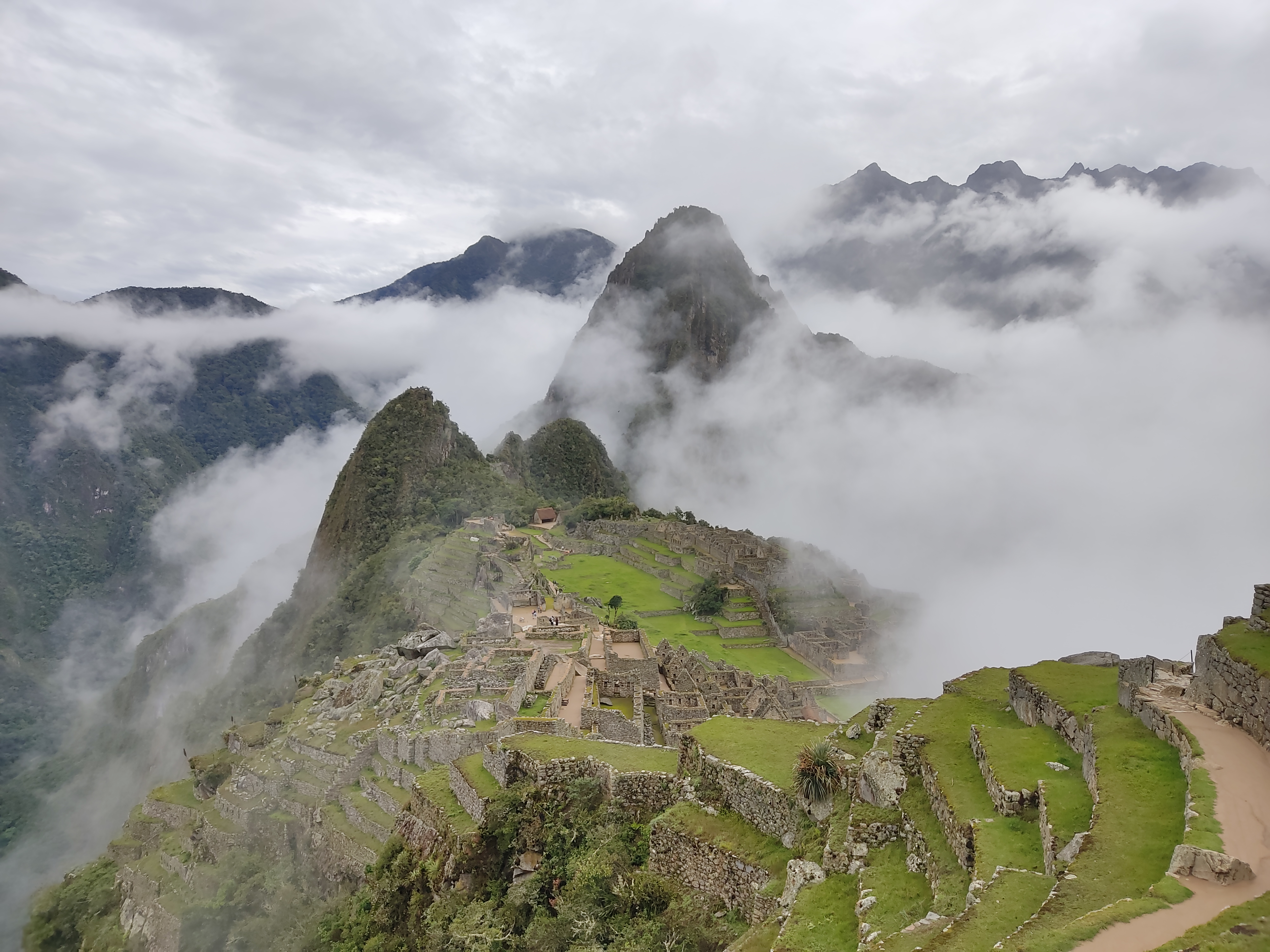
After taking some photos in the gaps between the clouds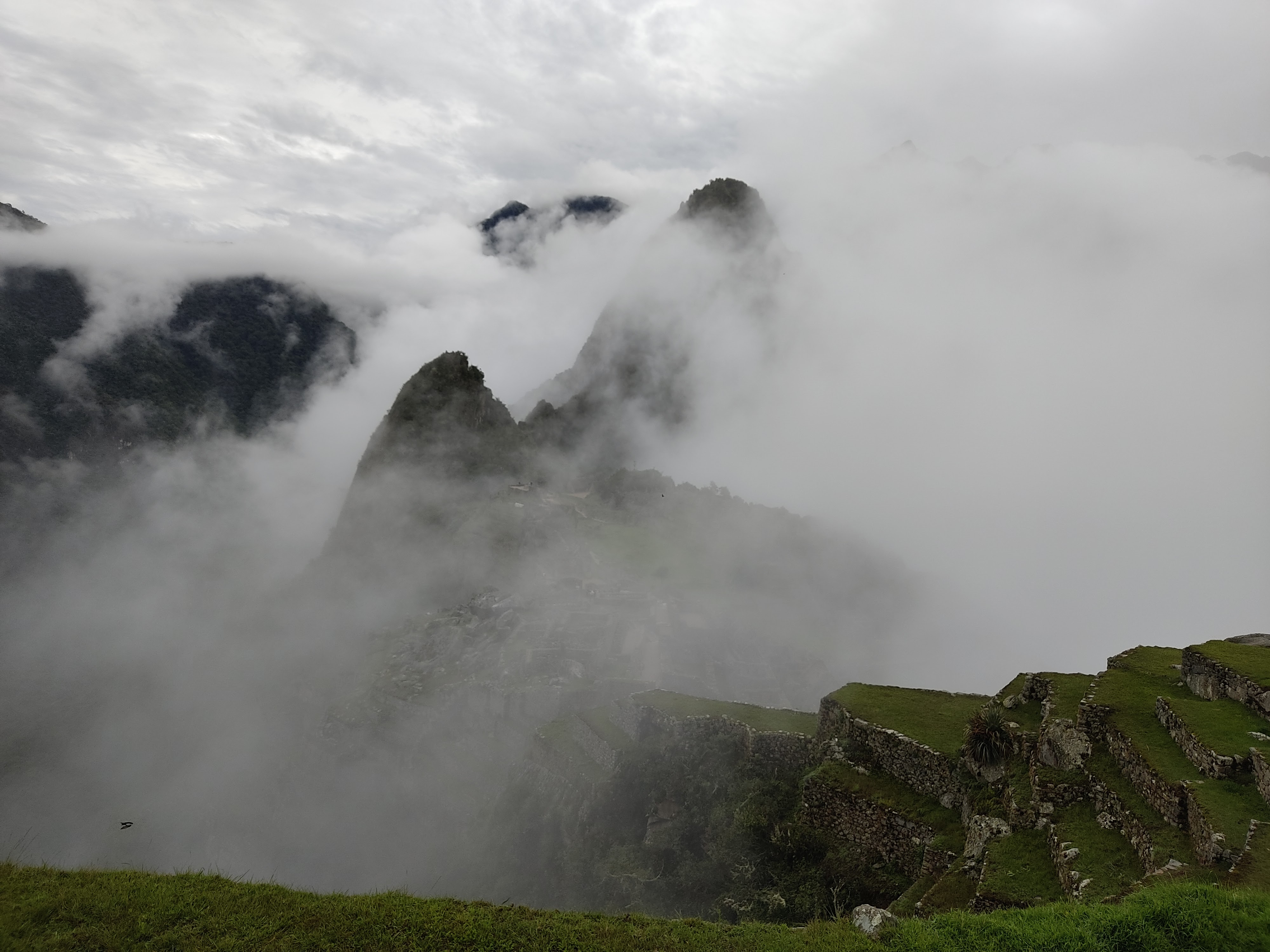 Visiting at the beginning of rainy season was always a bit risky. While we admired the view, a thick wall of clouds rolled over the mountains and we couldn't see for more than 10m infront of us. Luckily, it is super windy up on the mountains, so the clouds blow away as quickly as they arrive, but we did have these brief cloudy spells interrupting us quite regularly., we headed downOnly people entering from the Inca trail walk down the steps to the entrance; all other visitors walk up the steps. As we passed the crowds walking in the other direction, many of them applauded in awe when their guides told them that we had just finished the 4-day trail. Our backpacks and sweaty clothes might have been a give away, too. to begin our tour of the huge archaeological site. We could see examples of everything we learned about the Incas from the archaeological sites along the trail, passing farming terraces, houses, palaces, and templesAs well as the famous sun temple, Machu Picchu had a temple featuring a rock shaped to look like a condor, and another with a large boulder shaped to mimic the silhouette of the tallest mountain visible from the city. to various important deities. The main difference was that Machu Picchu was huge - a fully functional city housing over 500The population of Machu Picchu is still under dispute. Many people argue that it had the space for over 1,000 permanent residents, but analysis of the City's water supply suggests it could not support a population of more than 500. people. In the middle of the site was the temple of the sun, where we could see all the way back up to the sun gate on the hillside where we stood a few hours before. The best part about wandering the site was the endless views. The vibrant green mountains contrasted with the weathered rocky walls, and everywhere we passed looked like a postcard.
Visiting at the beginning of rainy season was always a bit risky. While we admired the view, a thick wall of clouds rolled over the mountains and we couldn't see for more than 10m infront of us. Luckily, it is super windy up on the mountains, so the clouds blow away as quickly as they arrive, but we did have these brief cloudy spells interrupting us quite regularly., we headed downOnly people entering from the Inca trail walk down the steps to the entrance; all other visitors walk up the steps. As we passed the crowds walking in the other direction, many of them applauded in awe when their guides told them that we had just finished the 4-day trail. Our backpacks and sweaty clothes might have been a give away, too. to begin our tour of the huge archaeological site. We could see examples of everything we learned about the Incas from the archaeological sites along the trail, passing farming terraces, houses, palaces, and templesAs well as the famous sun temple, Machu Picchu had a temple featuring a rock shaped to look like a condor, and another with a large boulder shaped to mimic the silhouette of the tallest mountain visible from the city. to various important deities. The main difference was that Machu Picchu was huge - a fully functional city housing over 500The population of Machu Picchu is still under dispute. Many people argue that it had the space for over 1,000 permanent residents, but analysis of the City's water supply suggests it could not support a population of more than 500. people. In the middle of the site was the temple of the sun, where we could see all the way back up to the sun gate on the hillside where we stood a few hours before. The best part about wandering the site was the endless views. The vibrant green mountains contrasted with the weathered rocky walls, and everywhere we passed looked like a postcard.
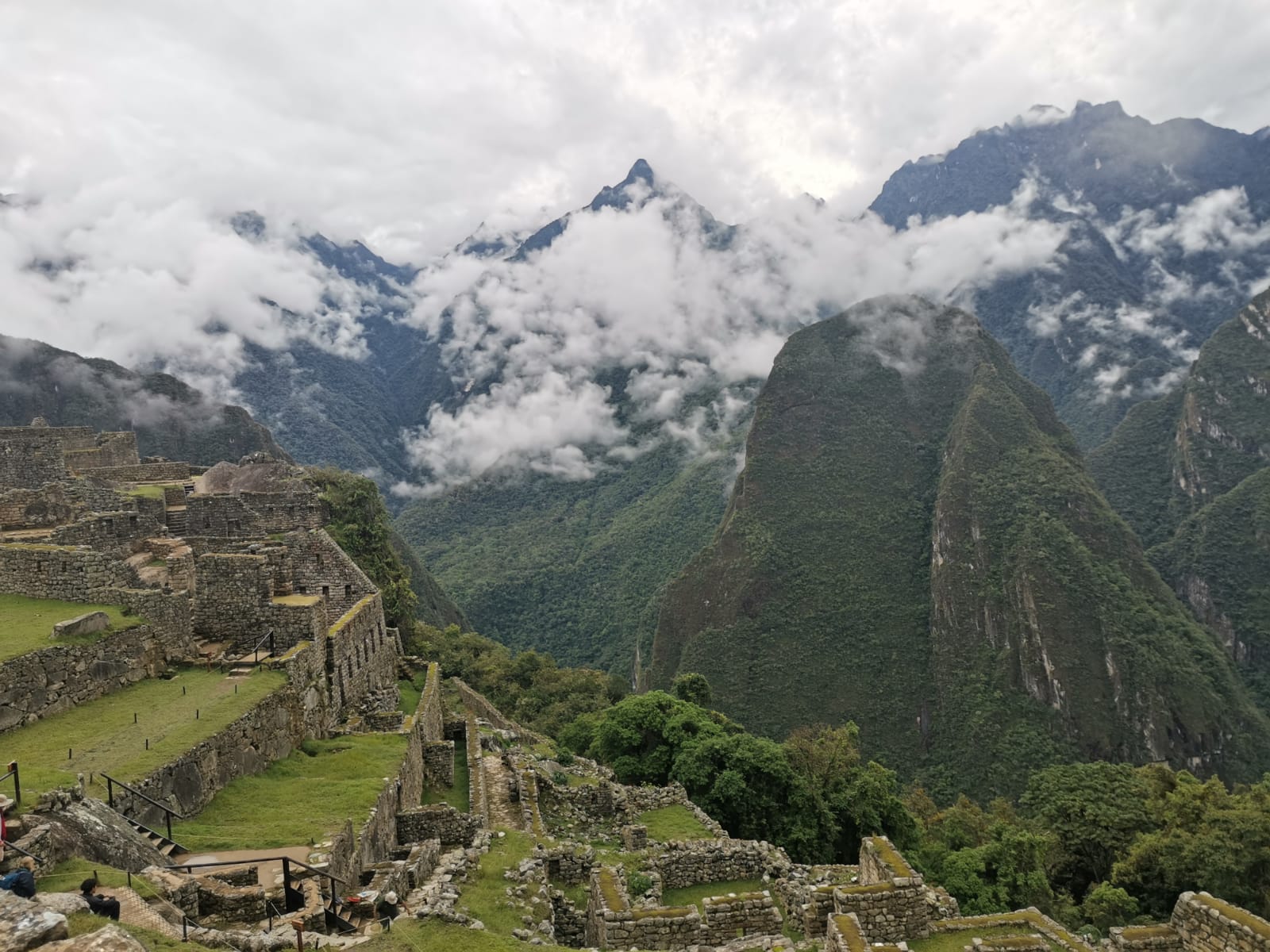
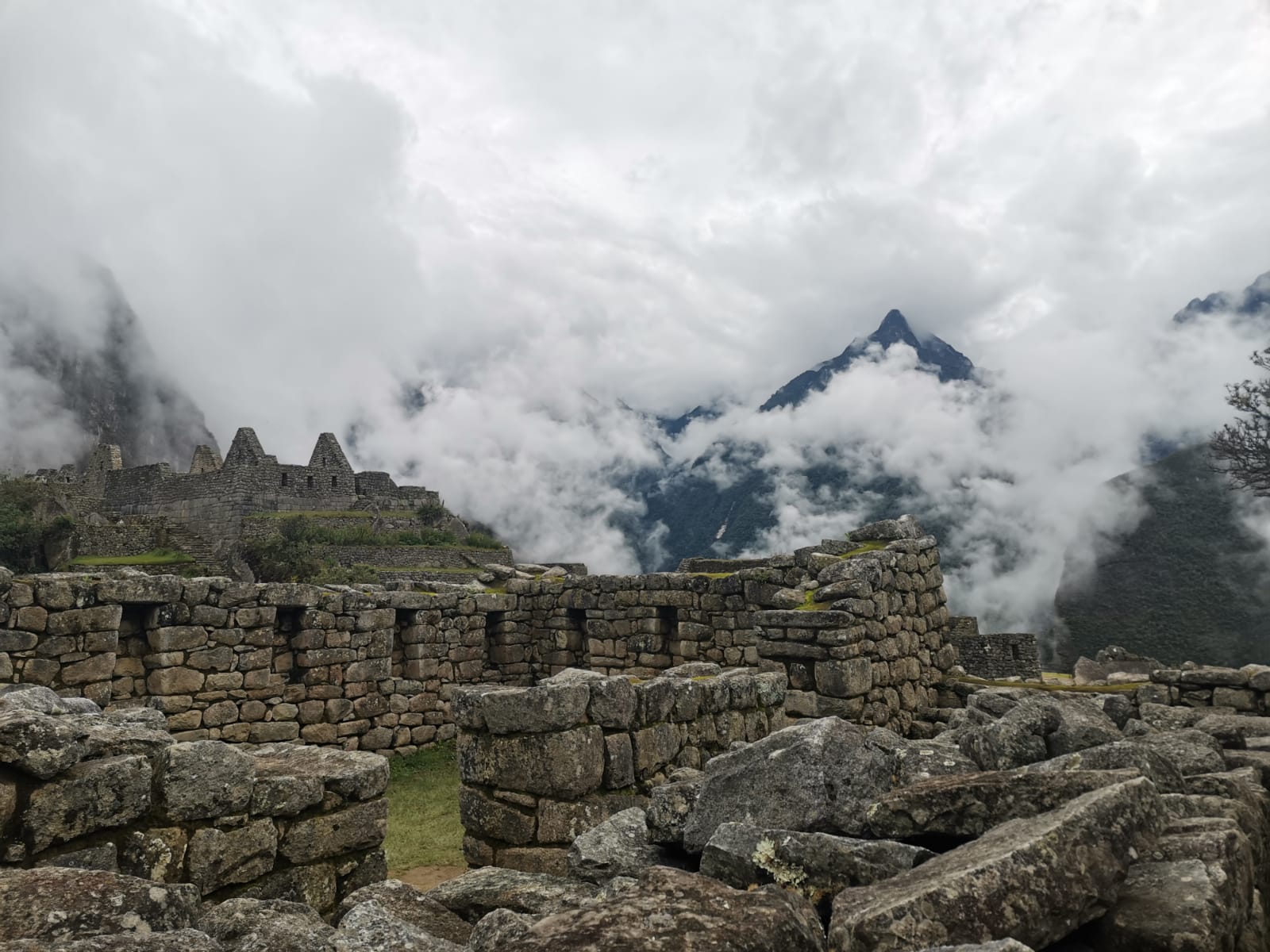
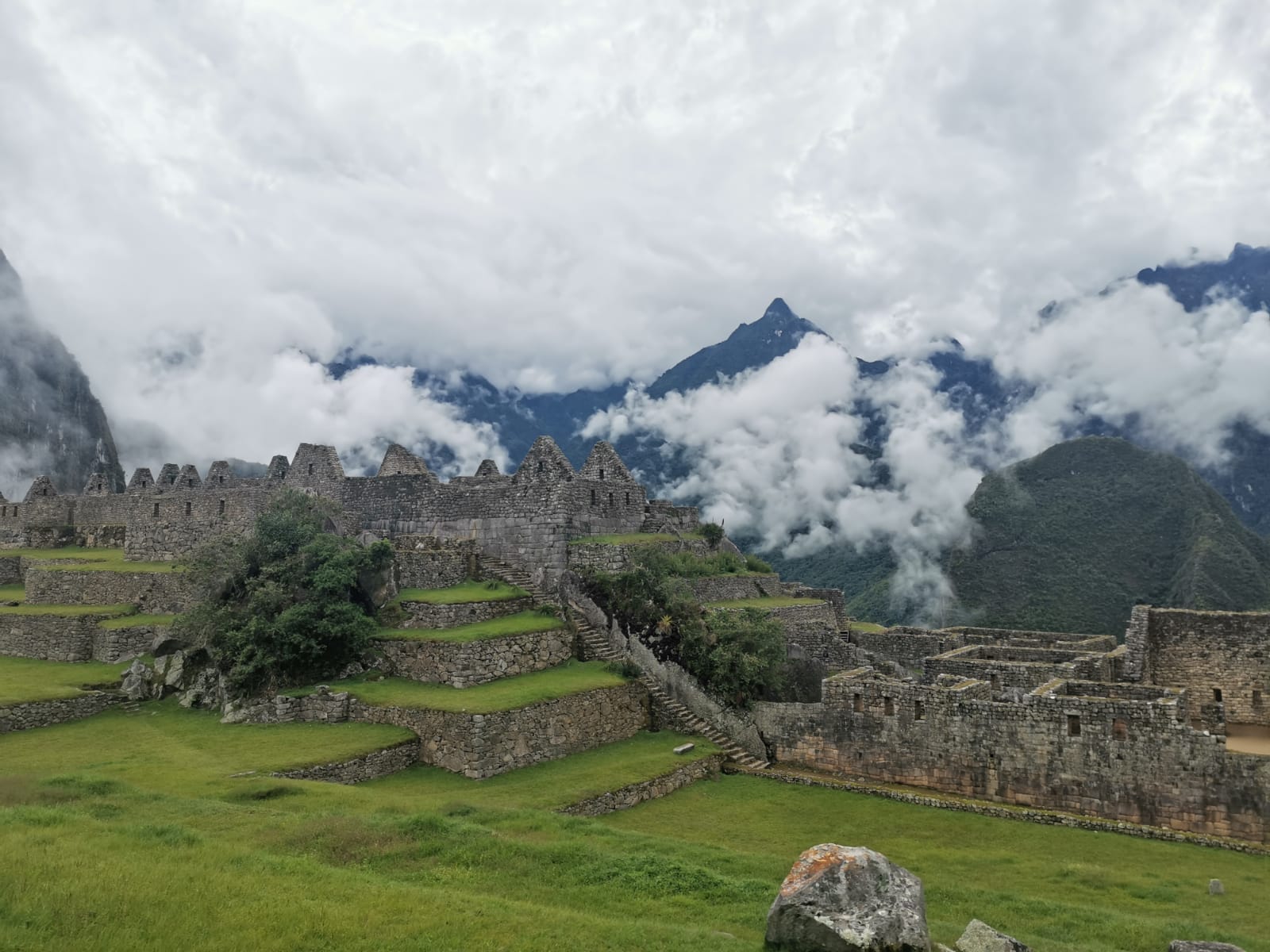
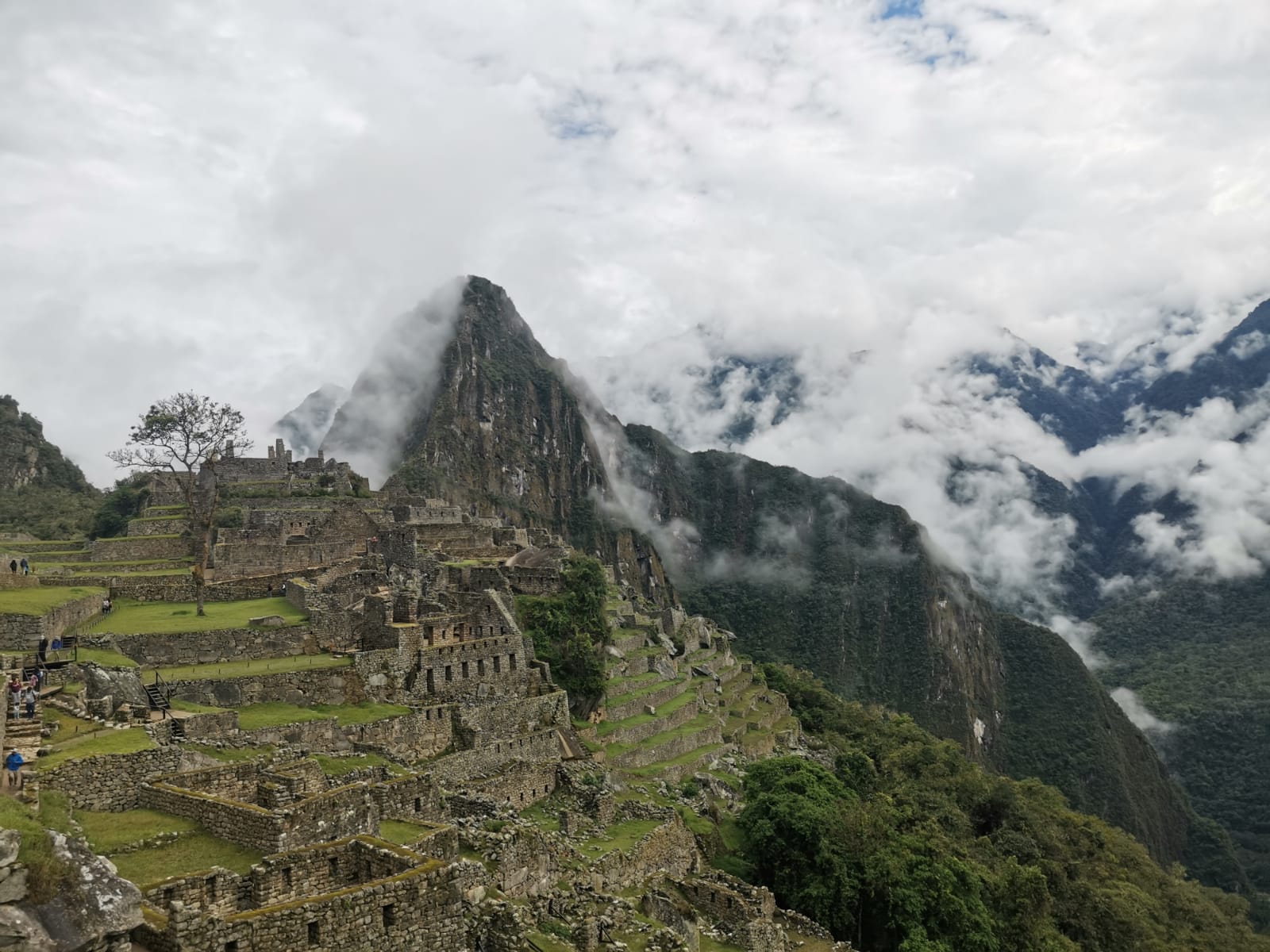
Machu Picchu was impressive in its scale, but also in its details, which showcase the expert craftsmanship of the Incas. They used many different stylesGenerally, the more important the building, the more perfectly polished and regular the stones were, so it is easy to spot the temples and palaces from the farmhouses. of construction for different buildings, and had primitive locks for the important doors and water fountains for irrigation, which still work today and provide us with an idea of the layout of the city. We were even shown one wall which was never finished, with the top being perfectly polished but the bottom still irregular as it was abandoned before completion. Machu Picchu is a bit like a museum, only it feels more immersive and you can imagine how the city felt all those years ago, with houses and farms and temples.


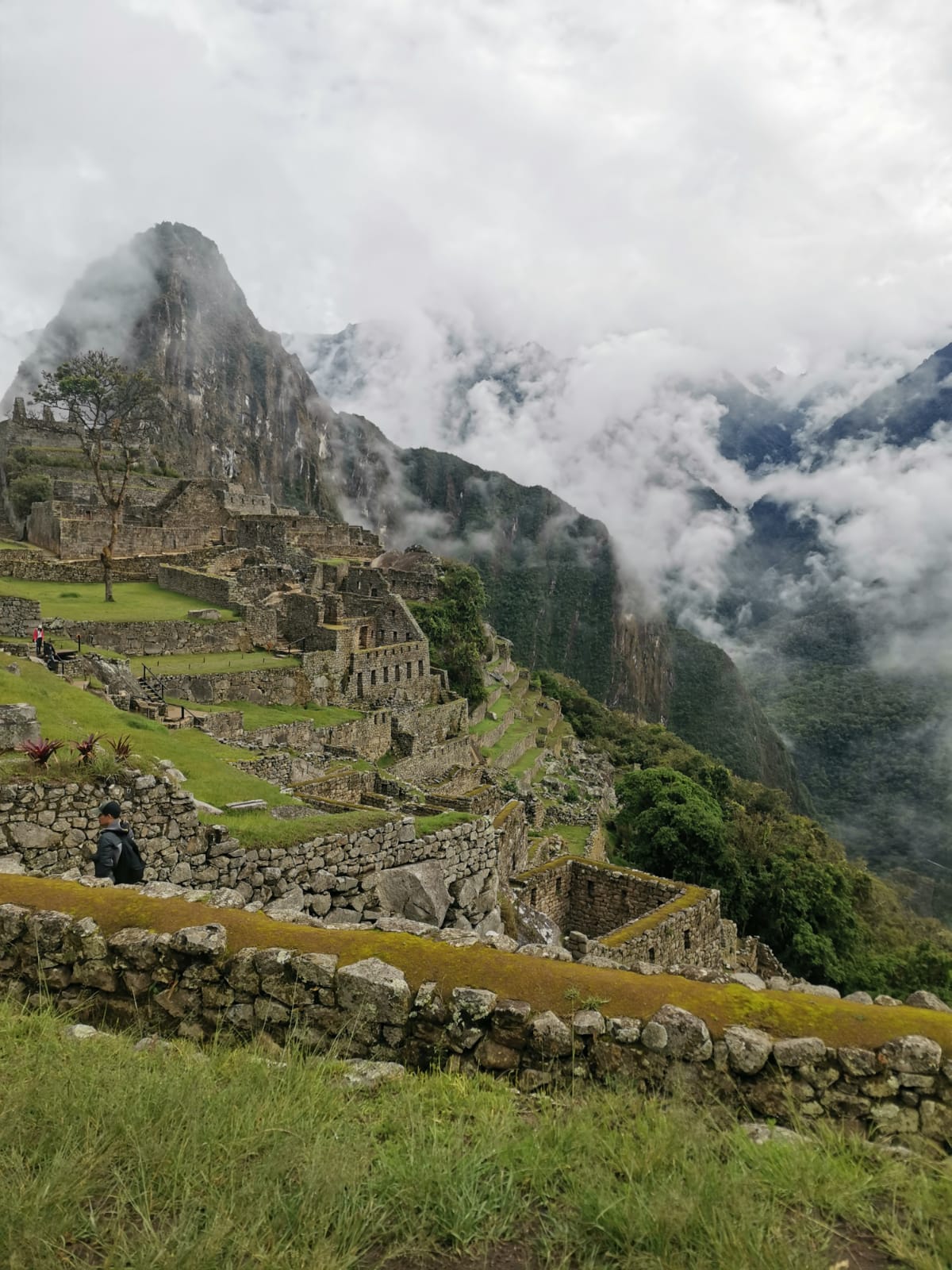


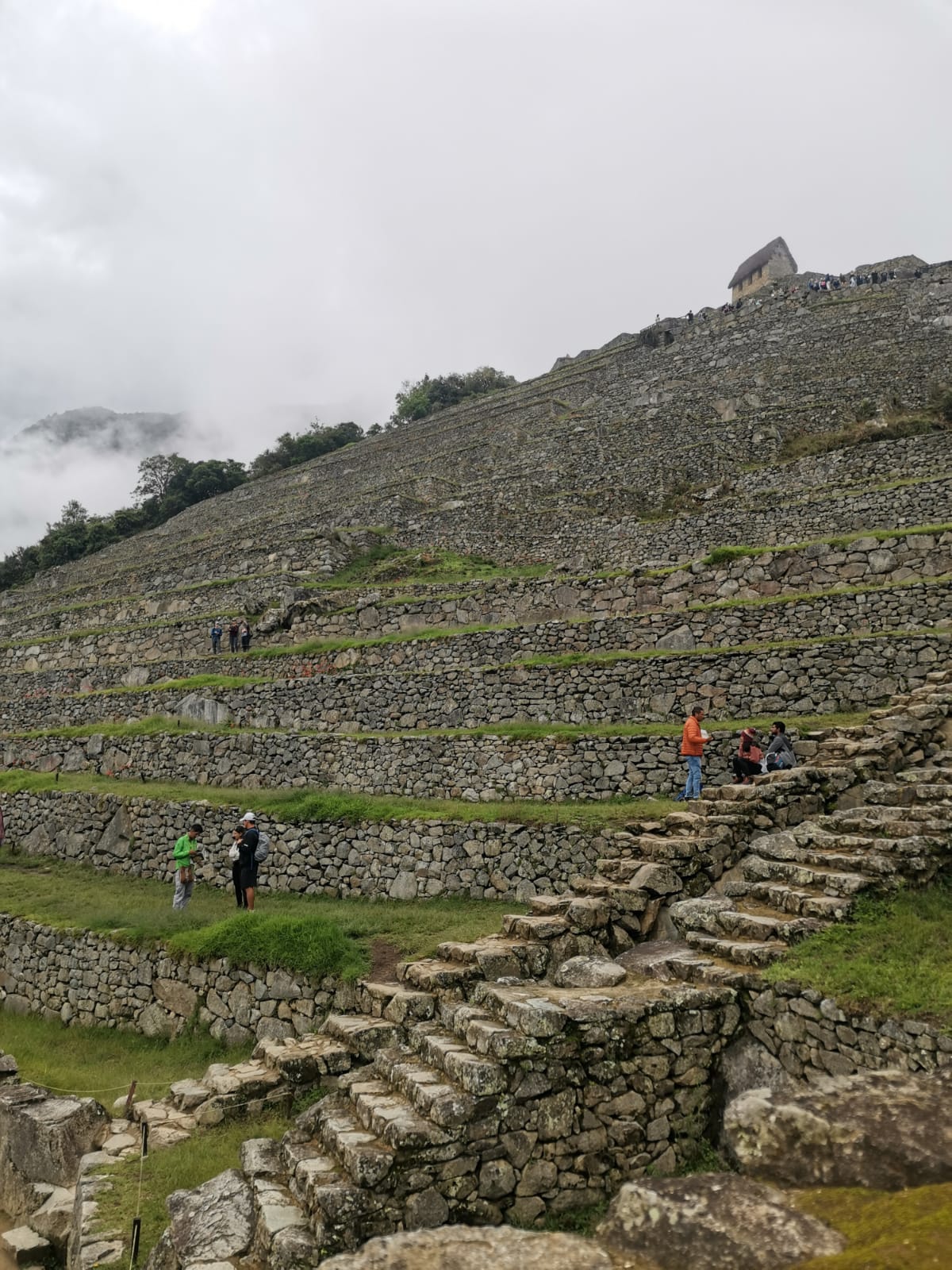

We learned that the city was never finished, and was abandoned when the Spanish colonisers took Cusco, the Incan capital city. Constructing something so huge and spiritually important took a lot of time and effort, even for a civilisation as proficient at construction as the Incas. While the Colonisers destroyed the sacred Incan buildings in Cusco as a way to squash their beliefs and assert dominance, the Incas fled Machu Picchu, destroying the paths that led there to make it harder for the Spanish to locate their sacred city. Their trick worked, and the Spanish never did find Machu Picchu, and it remained untouched and hidden, until its relatively recent discoveryThe discovery of Machu Picchu was controversial, with the American explorer Hiram Bingham originally credited with the city's discovery. Recently, it has come to light that there was clear evidence of Quechua people being present at the site a few years prior to Bingham's expedition, only Hiram Bingham went to great lengths to hide this evidence to ensure he was credited with the first discovery.. Unfortunately, we do not know the original name of the city - 'Machu Picchu' is simply Qechua for 'Old Mountain', which is how the ruins were first described. For its own protection, the Incas took the secret of Machu Picchu to their graves, and so we will never know its true name.

Overview.
Although the cheaper Salkantay trek is gaining popularity as an Inca trail alternative, the immersive experience of this famous pilgrimage to Machu Picchu is unrivalled. Every day of the trek was incredible, from the scenery to the food and the efforts of the porters, and everything we learned along the way. In the end, we experienced so much more than we ever imagined when we first decided to do the trek, and it is easy to justify the high price with such an unforgettable experience.


